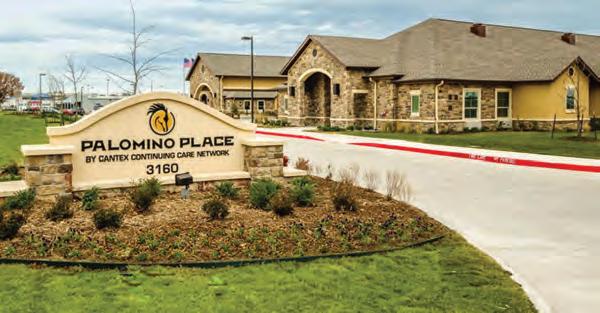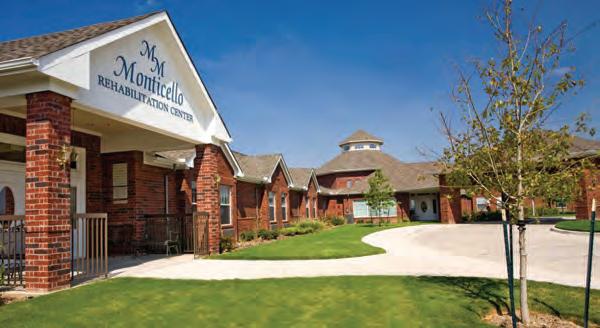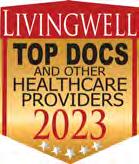




Dr. Courtney is a board-certified orthopedic spine surgeon located in Plano, Texas. A Louisiana native, he attended Louisiana State University for medical school, and completed residency at Texas A&M followed by a fellowship at the Florida Neck and Back Institute.
SPECIALTIES:
• Back Pain
• Neck Pain
• Spine Pain
• Disc Replacement
• Microdiscectomy
• Spinal Fusion
• Minimally Invasive Surgery
• Steroid Injections
• Physical Therapy
“I believe in treating each of my patients with honesty, dignity, and respect. My patients come away from our shared interactions feeling confident, assured that they are truly in the best hands. Throughout my career, I have remained laser-focused on providing world-class care and innovation to the patients I treat on a daily basis. I look forward to getting to know you!”








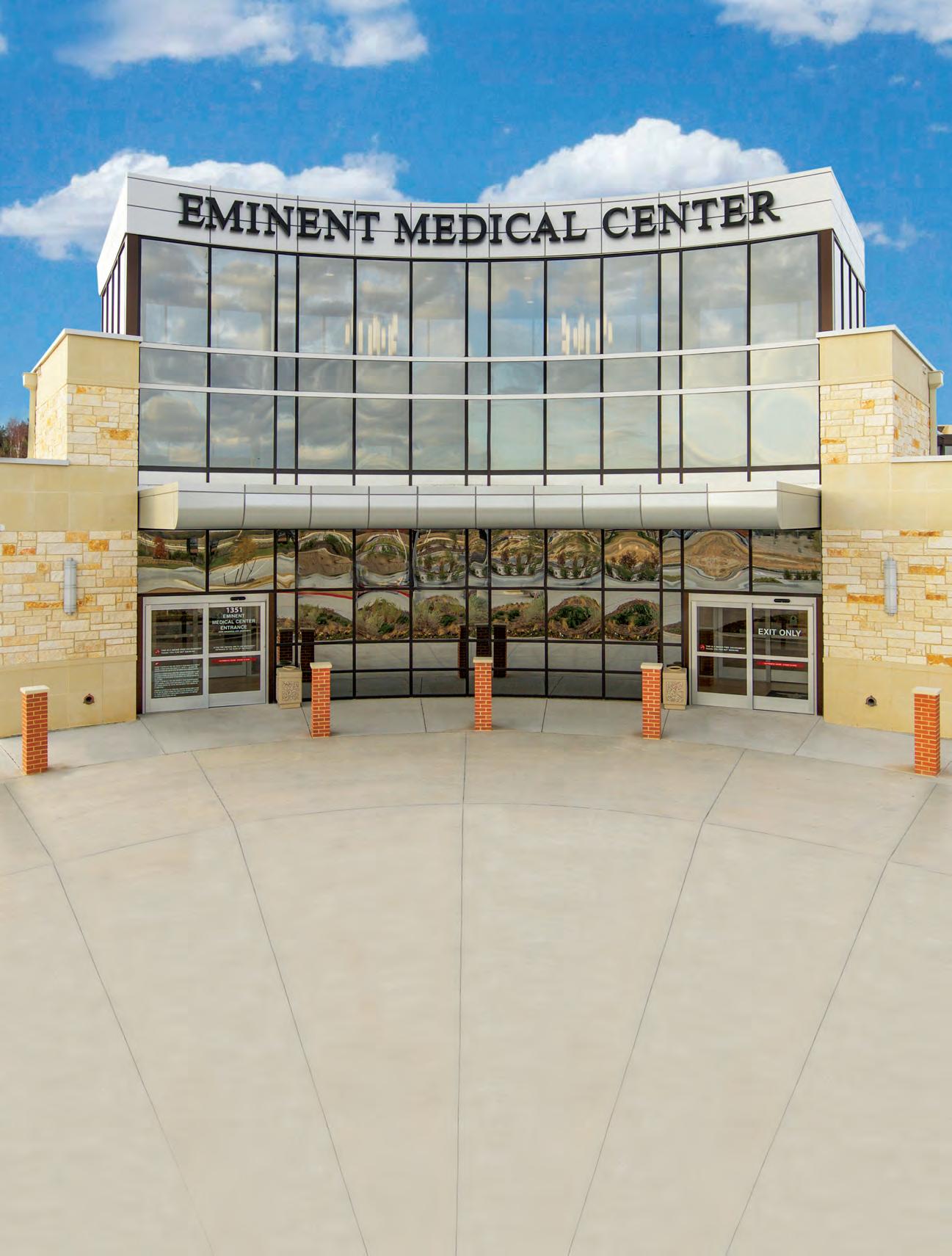

Pain Management • Sports Medicine • General Surgery • Spine Surgery
Orthopedic Surgery • Neurosurgery • Minimally Invasive Spine Surgery
Total Joint Surgery • Foot & Ankle Surgery • Hand Surgery
Gynecological Surgery • Plastic Surgery



Greetings to all our readers, and welcome to another insightful edition of LIVING WELL Magazine. Each issue we aim to bring you compelling content that supports your journey toward wellness, offering guidance on health, fiance, legal matters, and more.
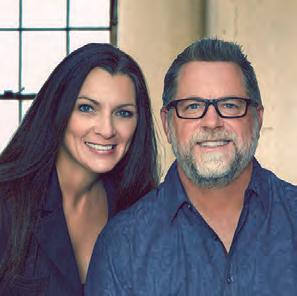
Our cover story this month features Dr. Stephen P. Courtney, a distinguished orthopedic spine surgeon whose commitment to his patients sets him apart in the medical community. Dr. Courtney’s career began humbly, working as an orderly in his teenage years, which sparked his passion for medicine. His academic and professional journey is nothing short of inspiring, having developed innovative spinal care technologies now patented under his name. Dr. Courtney applies a unique blend of hightech and high-touch approaches at Advanced Spine Center, ensuring that every patient receives the personalized care they deserve. Beyond his professional realm, Dr. Courtney is also an avid triathlete, illustrating the deep connection between physical endurance and personal health. Check out his story on page 8.
Meanwhile, Josh Lucas, a familiar face with an unforgettable voice, graces our celebrity spotlight. Known for his roles across a spectrum of Hollywood films and as a narrator for iconic brands, Lucas’s contributions to entertainment are diverse. His dynamic upbringing and eclectic career have equipped him with a nuanced understanding of his craft.Currently captivating audiences in the Apple TV+ series Palm Royale, Lucas reflcts on his acting journey and the serene life he leads off-amera in Ojai, California, on page 24.
Next up, we touch upon a serious issue. With digital advancement comes increased risk, particularly of identity theft.In 2023 alone, the FTC received over a million complaints, highlighting the pervasive challenge it poses. Check out the article on page 44, which offers a toolkit for robust defense, from adopting advanced digital security measures like two-factor authentication and password managers to simple, everyday precautions like document shredding and cautious sharing of personal information. It’s an essential read for anyone looking to protect their digital and physical personas in this interconnected age.
We are thankful to our dedicated contributors who enrich this magazine with their knowledge and expertise, making it a valuable resource for anyone looking to enhance their quality of life.
As you flp through the pages of this edition, we hope you fid motivation and guidance to improve your health, protect your personal information, and gain new perspectives on living well. Remember, whether facing physical challenges, cinematic adventures, or digital vulnerabilities, the key to living well is staying informed and proactive.
Happy reading!

PRESIDENT & CEO SAM HOUSTON
VICE PRESIDENT & CFO SPRING HOUSTON
EDITOR, FEATURE WRITER & SOCIAL MEDIA SONDRA BARR
ART DIRECTOR VANESSA FRYER
ACCOUNTS MANAGER JENNIFER BEAVERS
WEBSITE LYDIA ROGERS
ADVERTISING & SALES
TEXAS: Denton County, Dallas County, Collin County
TEXAS & OKLAHOMA: Texoma Area
WRITE TO US:
Tell us who you would like to see featured on the cover, or what subjects you would like covered in upcoming editions of LIVING WELL MAGAZINE at info@livingwellmag.com
SUBSCRIPTIONS & CUSTOMER INQUIRIES
Houstons of Dallas Publishing, Inc. 102 E. Broadway, #901 Prosper, TX 75078
www.LivingWellmag.com
Phone: (214) 507–1000 Fax: (855) 248–2132
LIVING WELL MAGAZINE is a source for quality educational articles on living a healthy, vibrant life. Our focus is on connecting our readers with the latest information on a host of topics relevant to their evolving life. From cutting edge medical news and procedures to top–tier financial, legal and lifestyle information. Connecting readers to leading medical and business professionals in their community in Texas and Oklahoma.
All advertisements in this Magazine are placed by third parties. We do not control or endorse either the advertisements or their content. Further, we do not manufacture, sell, distribute or provide any of the goods or services advertised herein. We hereby expressly disclaim any liability with respect to information or goods and services contained herein. We further disclaim any and all warranties or representations, express or implied, with respect to such information, goods or services, including any warranty of merchantability or fitness for a particular purpose (it being understood that
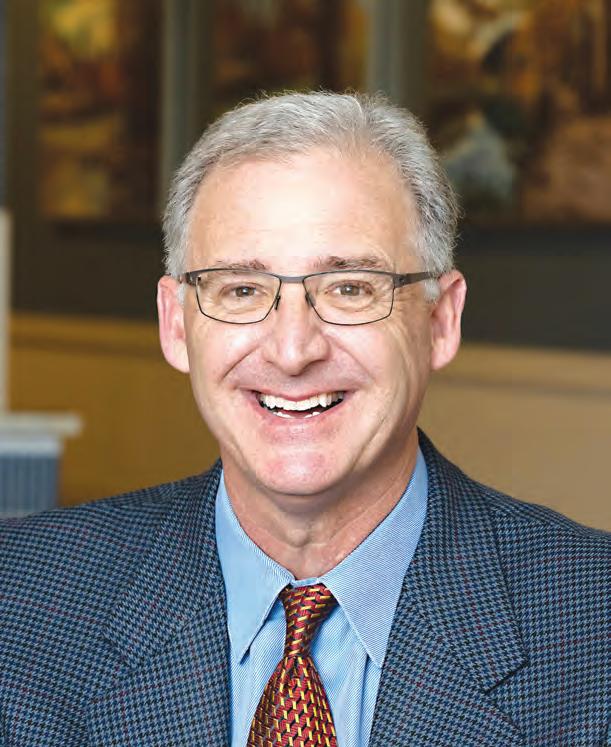
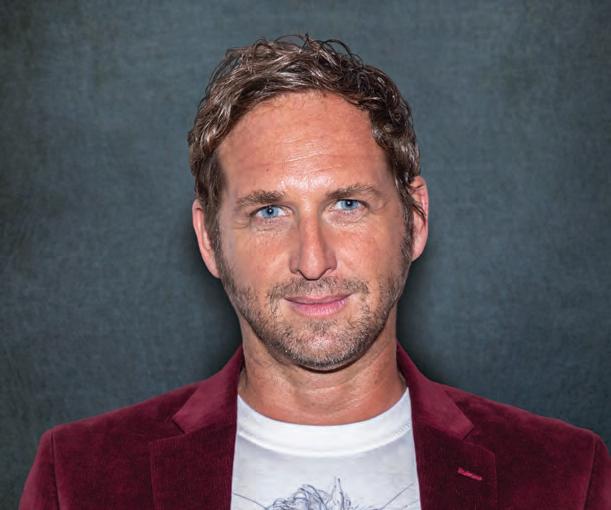
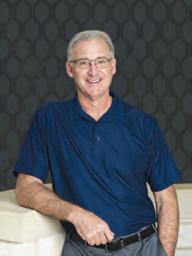



Southwest Foot & Ankle Center is a respected group of board certified foot and ankle surgeons. They are fellow trained surgeons, and board certified in wound care and reconstructive surgery. All physicians have also completed an intense residency and fellowship in the area of limb salvage, and foot and ankle surgery. The team at Southwest Foot & Ankle Center strive to make each patient’s experience personable. Our outcomes are of perfection and meticulous in surgery. As a result, patients from all over the country seek to be treated by DFW Wound Care Center.
(Plantar Fasciitis)
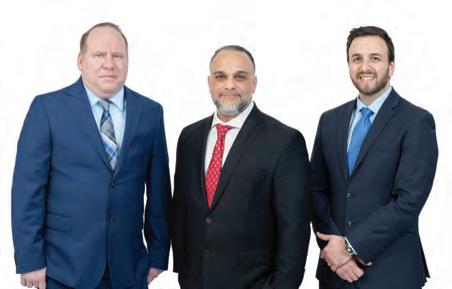
Toenails
Braces
Laser Therapy for Pain, Swelling, Arthritis, and Wounds

Robotic
Total
Total Knee Replacement
Partial Knee Replacement
Total Hip and Knee Revisions
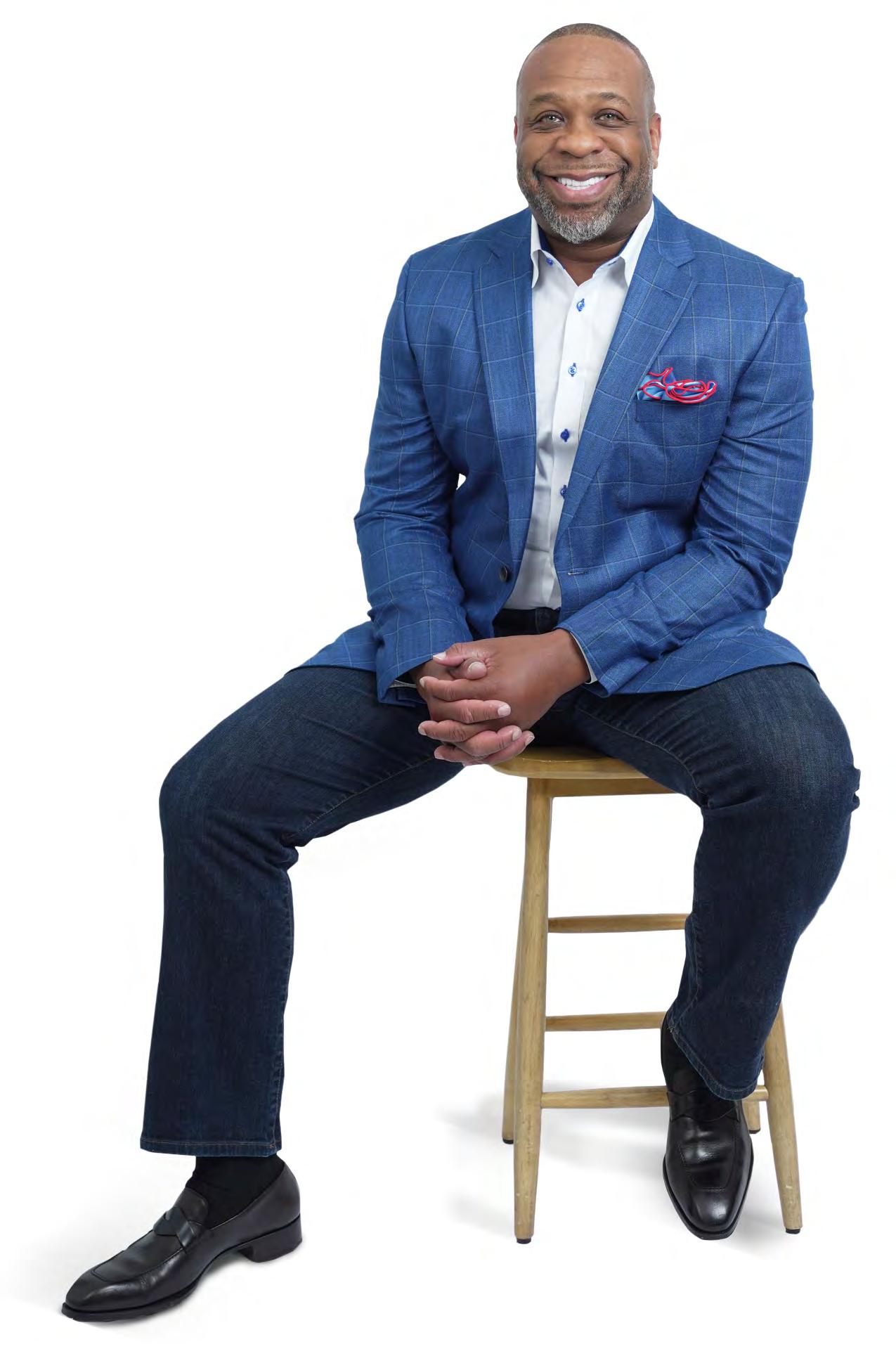

For board-certifid, fellowship trained orthopedic spine surgeon
Dr. Stephen P. Courtney, patients come fist. It’s an ethos that developed early on in his life and one that has helped guide him in his journey to earn a distinguished reputation among his professional colleagues, medical peers and, most importantly, his patients.
Dr. Courtney began his medicine career from the ground up. While a teenager, he spent summers working in a rural north Louisiana hospital. As an orderly, he was an integral part of the hospital environment. While not a glorifid job, cleaning bed pans, changing bed sheets, cleaning patient rooms, helping medical practitioners, and assisting patients, offered him an invaluable glimpse into the hard work and dedication necessary to succeed in the medical fild. The job also served as the catalyst for his decision to pursue medical school.
Inspired by the patients he’s cared for there, Dr. Courtney made education a priority. He was salutatorian of his high school class and went on to graduate summa cum laude from Northeast Louisiana University. While at Louisiana State University Medical School, he utilized his summer to perform spine biomechanical tests on human spine cadavers utilizing pedicle screws. Considered cutting edge biomechanics and technology at that time, most spine surgeons didn’t even know they existed yet. However, Dr. Courtney performed one of the fist biomechanical tests on those implants. It was a feat that earned him the Howmedica Biomechanic Award and the Louisiana Orthopedic Association Award. He also placed fourth in the World Congress for Student Research Competition.
Dr. Courtney’s residency at Texas A&M University Medical Center and further specialty training through a fellowship at Florida Neck & Back Institute in Gainesville, Florida, additionally cemented his strong medical foundation. From there, he continued to gain more knowledge and insight on how to help his patients with useful tools, while recognizing there was room for much improvement in the tools at hand.
Ths realization inspired Dr. Courtney to design, develop, biomechanically test, complete FDA testing and oversee quality control and validation on a host of tools he created. To date, Dr. Courtney has developed nine spinal product lines and obtained nine patents and 14 trademarks on spine related products.
When he’s not traveling the country training other physicians on how to utilize his products, Dr. Courtney dedicates himself to the patients of his own medical practice, Advanced Spine Center.
Led by Dr. Courtney, the skilled team at Advanced Spine Center cares for patients with neck and back pain using a wide array of the most state-of-the-art tools and techniques—from conservative physical therapy and injection therapy—to advanced pain manage-
ment, as well as surgical intervention. We employ the latest in minimally invasive spine surgeries, in addition to cutting-edge replacement technology. Incorporating both high tech and high touch, we get our valued patients back to their lives so they can enjoy all the activities they love.
The medical fild is not the only arena in which Dr. Courtney excels. He approaches fitness with the same dedication and vigor he applies to medicine. In 2005, Dr. Courtney was in the top 10 of his age group in mountain biking in Texas. He also completed one of the largest cycling events in the country multiple times: the “Hotter’N Hell” race. Always up for a new challenge, from there, he began training to compete in triathlons.
Dr. Courtney trains for triathlons with the same focus he uses as a surgeon. Waking up at 4 a.m. six days per week to work out in his home gym, he never waivers from the goal at hand—exceeding his personal best. After successfully completing multiple triathlons, Dr. Courtney shows no signs of slowing down. He continues to train and looks forward to competing in many more triathlons.
“I think if you can survive a triathlon you are absolutely living well,” he says.
Paying attention to fitness is something he encourages his patients to consider, too. “People don’t have to be a tri-athlete to be healthy. I like to tell people you need to start small. Do something to be active. It can even be yard work—that’s a great workout too. As you get older especially, you need to be in tune with your body, monitor your calorie intake and be active. I encourage people to change slowly, start small, and fid out what you like to do,” he says.
Sharing his wellness journey is part of the straight-forward, honest approach that puts his patients at ease and creates a trusting bond, an important element for the highly technical operations Dr. Courtney performs to help restore patients’ quality of life. As he learned early on, the single most important person in the treatment process is the patient and well-informed patients are more successful in following through on their rehabilitation and have better outcomes.
It’s a sentiment that his patients echo. “You don’t want to trust (your back) to just somebody that has his name on a door. You have to go to people that you trust. I talked to people and everybody trusted Dr. Stephen Courtney and I do too and I’d highly recommend him,” says Judy Jones, a lumbar fusion patient of Dr. Courtney’s.
“Above all, I believe in treating each and every patient I have with honesty, dignity, and respect. My patients come away from our shared interactions feeling confidet, assured that they are truly in the best hands,” says Dr. Courtney, who always brings his A-game.
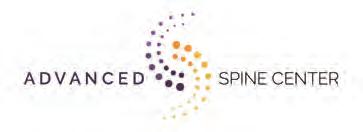

Incorporating both high tech and high touch, we get our valued patients back to their lives so they can enjoy all the activities they love.
SURGERY: L5/S1 360° LUMBAR FUSION
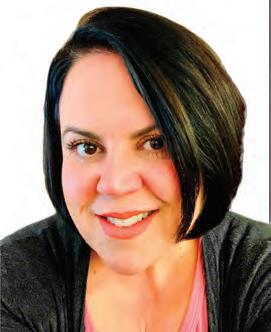
“After having back surgery twice and being frustrated with the lack of care from my previous doctor, I made an appointment to see Dr. Courtney. He is one of the most humble, funny, laid back and coolest surgeons I’ve met. He makes you feel like family. His office staff is amazing. His clinic Eminent Medical Center, where he performs the procedures, is also a 5-star facility. Every staff member I have encountered there has been so caring and professional. I am so glad I decided to change doctors and meet Dr. Courtney. I can see his attention to detail and his caring personality every time I see him. Before my injections he took some time to chat and made me feel at ease since it’s always nerve wrecking to have any spinal procedure. I will be having surgery soon and even though I am nervous and scared I know I am in good hands, and I know Dr. Courtney and all his staff will take great care of me. Thanks, Dr. Courtney and thanks to all his staff.”

SURGERY: LEFT L5/S1 MICRODISCECTOMY

“My husband and I have been coming to Dr. Courtney for years. We trust him for all of our back issues here recently. I had a spinal condition and had no doubt that Dr. Courtney would be able to take care of this and make me fully normal again. He and his staff were amazing! From the moment I decided to move forward with the surgery option to the very last post-op appointment, Dr. Courtney and his staff have been nothing but pleasant, courteous, professional and extremely friendly and helpful. I encourage anyone who has any type of back pain to come to Dr. Courtney’s office He is the BEST!”

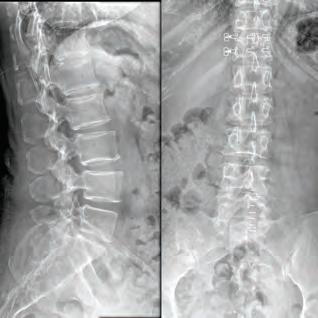
SURGERY: C4/C5, C5/C6, C6/C7 ACF (ANTERIOR CERVICAL FUSION)
“Great medicine coupled with great care. Dr. Courtney takes the time to listen to your medical needs. He put me at ease regarding my condition.”
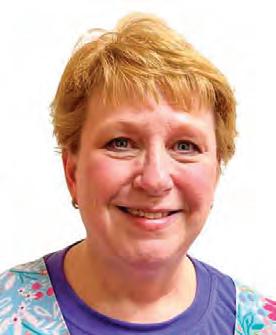

SURGERY: L5/S1 360° LUMBAR FUSION
“After struggling for 11 years with severe back pain, I found Dr. Courtney through a mutual friend. After the first visit, Dr. Courtney said he could fix my problem back pain and let me tell you HE DID! This 360° fusion has saved my life. Thank you, Doctor Courtney.”
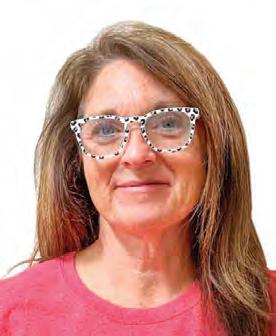

SURGERY: L4/5, L5/S1 360° LUMBAR FUSION
“After years of learning to “live with the pain” I made an appointment with Dr. Courtney, expecting a drawn out wait time. I was shocked at the quick, friendly and professional attention I received from Dr. Courtney and his staff. After 5 years of life altering pain, I am able to keep up with twin toddlers and a 3-yearold grandbaby without a problem. From office to operating room, Dr. Courtney and his staff are the best at what they do.”




Florian Dibra, MD is an Orthopaedic Surgeon who provides extensive knowledge in hip and knee orthopedics. He treats operative and non-operative hip and knee arthritis. He specializes in minimally invasive muscle-sparing total hip and knee replacement, anterior hip replacement, partial knee replacement, robotic joint replacement, and complex revision hip and knee replacement.
Dr. Dibra graduated with honors from Villanova University in Pennsylvania. Soon after, he received his medical degree, with cum laude honors from the esteemed Jefferson Medical College in Philadelphia, Pennsylvania. He completed his orthopedic surgery training at the University of Florida. He continued at the University of Florida Health Hospital to complete his fellowship in Adult Arthroplasty with an emphasis in hip and knee reconstruction. During Dr. Dibra’s surgical training, he accomplished several publications, book chapters, and poster presentations.
Dr. Dibra’s family consists of his wife and two children. In addition to English, he is fluent in Albanian, Italian, and proficient in Spanish.

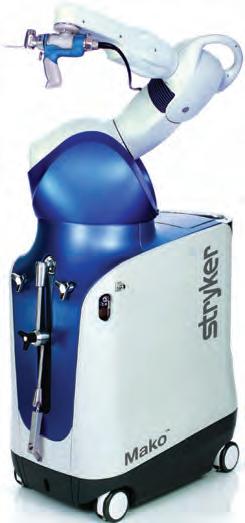


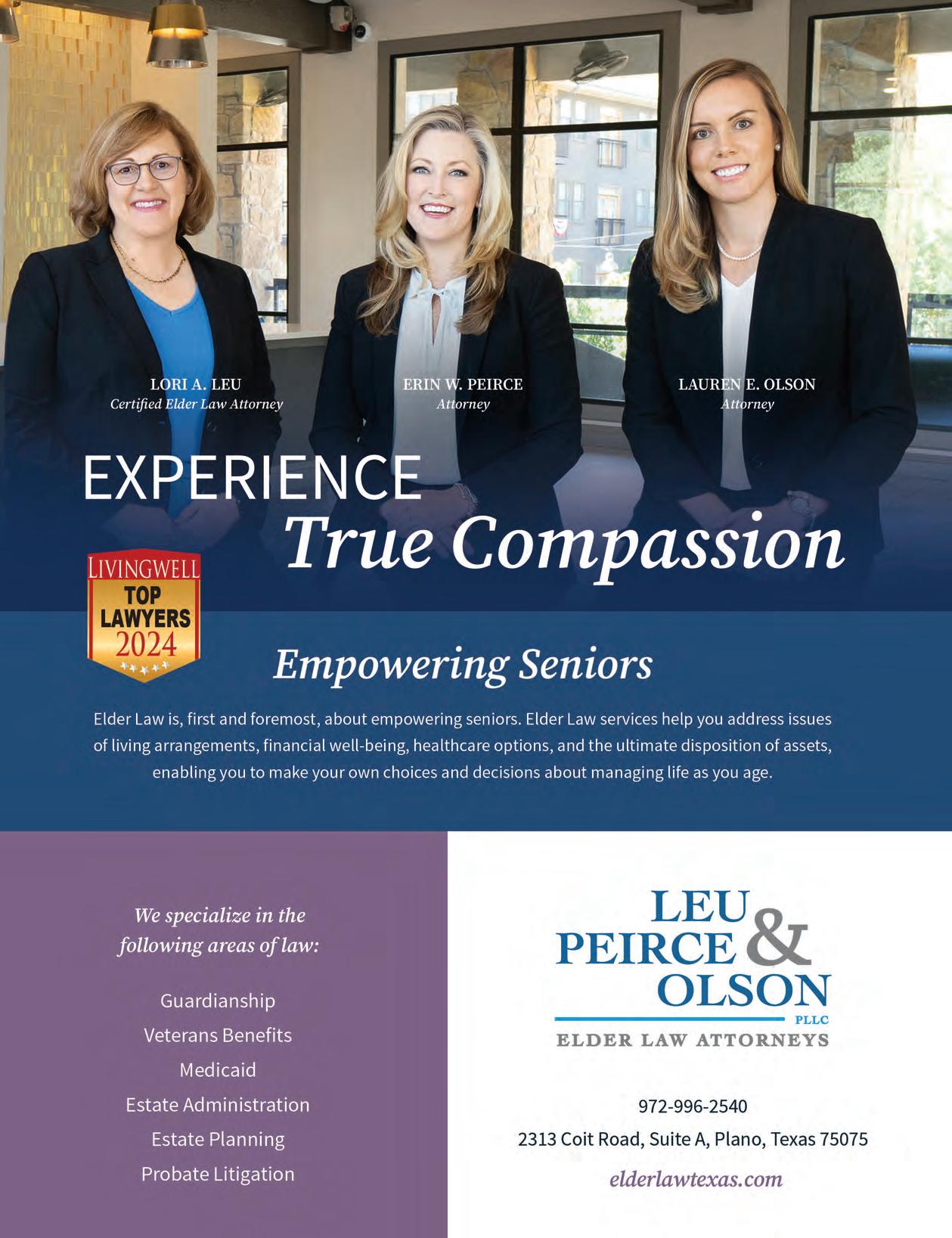

Losing a loved one is never easy. Many people describe the weeks and months following such a loss as “a blur.” After notifying family members, and planning and carrying out the memorial service, comes the question of how to handle the loved one’s estate. Many times, the answer is probate. While the probate process has a reputation for being time-consuming and costly, in Texas, it is relatively quick and inexpensive.
Probate provides for an orderly transition of property ownership following a death. Probate often is necessary when an individual dies holding title to property that had no named beneficaries. Accounts with rights of survivorship or payable-on-death beneficaries are examples of property not subject to probate. Importantly, in most cases, title to real property listed in more than one name does not automatically pass to the survivor. Therefore, probate is often necessary to transfer title of a homestead to a surviving spouse.
Any “interested person” may initiate the probate process. Ths includes anyone having a property right in, or claim against, the estate. Texas has two types of formal probate procedures. Most probates are handled as independent administrations, meaning the executor or administrator, after being appointed by the court, does not have to post a bond or ask the court’s permission before paying debts and distributing the estate. By contrast, a dependent administration is a court-supervised administration. If there is no Will, or if the Will does not provide for an independent administration, the administration will be “dependent,” unless the beneficaries agree otherwise. Dependent administrations tend to be more expensive, because the administrator must seek court approval for every major decision. However, this added burden and expense may be preferable to protect the administrator if the estate has multiple creditors or feuding beneficaries.
An “executor” is a personal representative who was named in a Will that has been admitted to probate, and who serves in the capacity stated in the Will. An “administrator” is anyone else who is appointed to handle the estate. The individual named in the Will has fist priority to serve as executor. However, the judge may refuse to appoint individuals named in the Will if the judge fids the such persons to be unsuitable.
Once the judge is satisfid that the Will is valid and the person asking to be appointed executor is a suitable person to serve, the court will issue to the executor a document entitled “Letters Testamentary,” which evidences the executor’s authority to gather assets and act on behalf of the estate. The executor must then issue notice to creditors, notify beneficaries, and gather the assets, which the executor must safeguard until the time comes to distribute to the beneficaries. Collecting and protecting estate assets is the primary job of the executor, who should care for the property of the estate as a prudent person would care for his or her own property. Once the business of the estate has been concluded, assets have been collected, and debts have been paid, the executor may distribute the assets to the beneficaries.
In addition to the independent and dependent administrations, Texas law allows for another simple probate procedure known as a muniment of title. A muniment of title may be used when an individual died with a valid Will, there are no unpaid debts, except those secured by real property, and the individual was not receiving Medicaid benefits prior to death. Ths proceeding allows for the probate of a Will without the requirement of appointing an executor or administrator, notifying creditors, or filing an inventory, thus making the process easier and less expensive. A muniment of title is not a feasible option if the individual owned real property outside Texas or held non-probate assets, such as insurance or retirement accounts, that were payable to the estate, rather than an individual.
There are many factors and variables to consider when determining whether and what type of probate proceeding is appropriate for an estate. A Will remains a valid legal document for four years after the date of death. After that time, if administration of an estate is necessary, it will be handled as if there was no Will. Therefore, if a loved one has died, it is important to contact an attorney who handles probate to discuss which of the various options is best suited to meet your circumstances. Lori Leu, Erin Peirce, and Lauren Olson are Elder Law attorneys with Leu, Peirce & Olson, PLLC located in Plano, Texas. They can be reached at 972-996-2540.




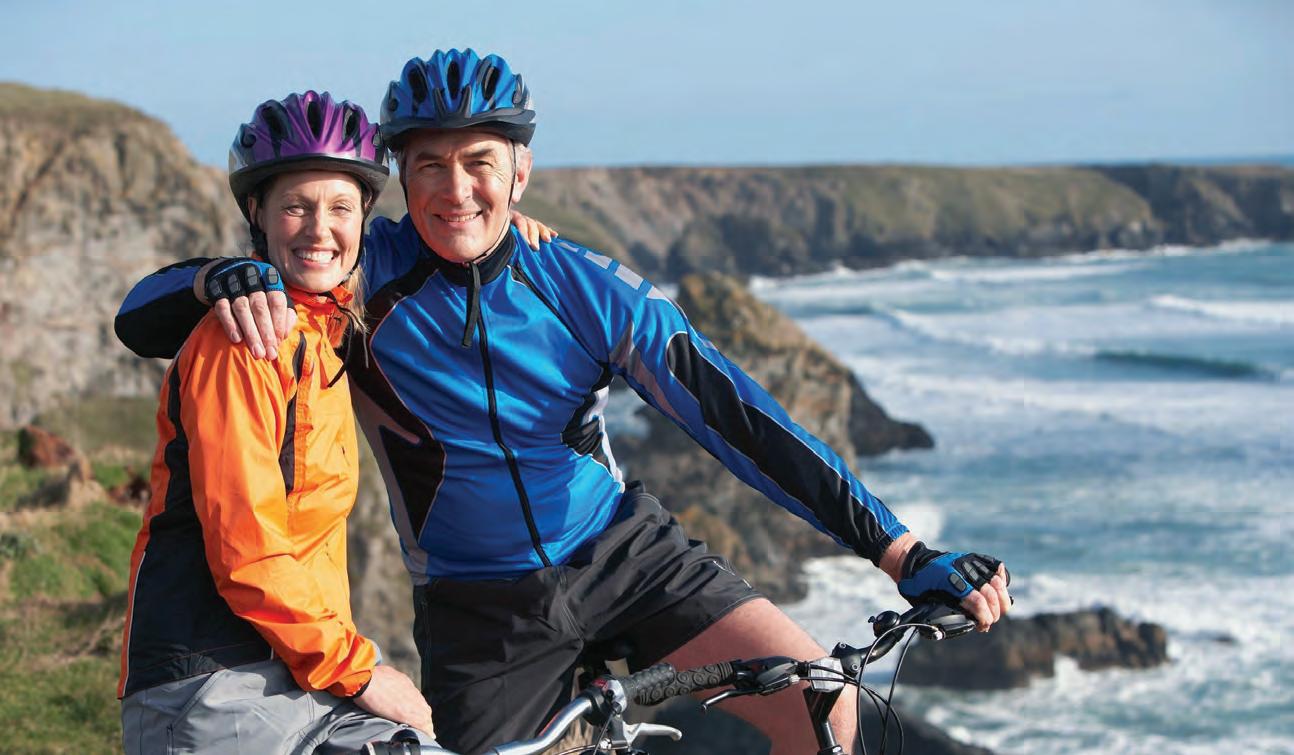
Dr. Bilal Mahmood is a Cleveland Clinic trained orthopedic surgeon with fellowship training in adult hip and knee reconstruction and joint replacement. He specializes in anterior hip replacement, robotic joint replacement, hip resurfacing, total knee replacement, partial knee replacement, minimally invasive joint replacement, same-day joint replacement, complex hip and knee deformity, revision joint replacement, hip and knee arthritis, osteonecrosis, hip dysplasia, and femoroacetabular impingement (FAI).
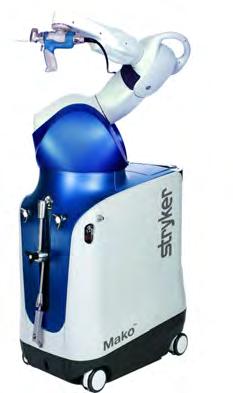
Outside of work, Dr. Mahmood enjoys spending time with his wife and children. His hobbies include alpine skiing, baseball, hockey, biking, and travel.
He is involved with local outreach organizations for medically underserved populations. He is also involved in research and innovation to advance hip and knee joint replacement.
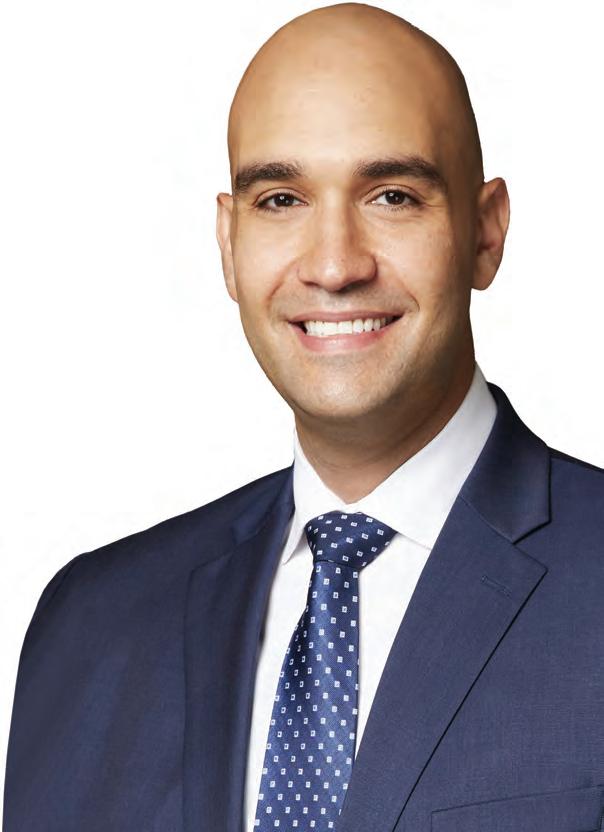
Adult In-Home Care Agency
Spectrum Health Solutions
Visiting Nurse Association of Texas
Alzheimer’s Care/Memory Care
Hidden Springs of McKinney
Prestonwood Court
The Iris Memory Care
Audiologist
Teresa Harris
North Dallas Ear, Nose and Throat
Cassandra Wilson
Hearing Services of McKinney
Bariatric Surgeon
John Alexander
Alexander Center for Obesity Surgery
Brian Long
Nicholson Clinic
Nick Nicholson
Nicholson Clinic
Thomas Roshek
Nicholson Clinic
Cardiac Surgeon
Brian Lima
Advanced Cardiothoracic Surgeons
Baxter Montgomery
Montgomery Heart and Wellness
Cardiologist
Irfan Hameed
Excel Cardiac Care
Tim Isaac
Premier Cardiovascular Care
Marc Shalek
Legacy Heart
Chiropractor
Cyrus Laali
Epic Chiropractic
Nicole Jackson
Grounded Wellness
Eric Peay
Corehealth Wellness
Cosmetic and Facial Plastic Surgeons
Jeff Angobaldo
Renaissance Plastic Surgery and Med Spa
Richard Ha
Dallas Plastic Surgery Institute
Gregory Roberts
Robert’s Cosmetic surgery
Dentist
David Bohannan
Bohannan Dentistry
Daniel Kou
Core Dentistry
Jason Roe
ProDental Dallas
Jenny Tai
Murphy Dental & Implant Center
Dermatologist
Carla Gustovich
Magnolia Dermatology
Rachel Quinby-Graves
Magnolia Dermatology
James Ralston
Dermatology Center of McKinney
Jerald Sklar
Dallas Associated Dermatologists
Daniel Smith
Dallas Diagnostics
Hospital for Surgeries
Baylor Heart Plano
Eminent Medical Center
Medical City McKinney
Medical City Plano
Presbyterian Hospital Plano
Endodontist
Hank Garrett
Hank Garrett, DDS
ENT – Ears, Nose, & Throat Specialist
Kenny Carter
Collin County Ear, Nose and Throat
Morris Gottlieb
North Dallas Earn Nose and Throat
Timothy Ragsdale
Texas ENT Specialists
Andrew Senchak
Texas Ear and Vestibular Institute
Family Physician
Guy Culpepper
Bent Tree Family Physicians
William Dodge
Questcare Medical Clinic
Martin Mcelya
Neighborhood Medical Center
Todd Wien
Village Health Partners
Lauren Woolbert
Village Health Partners
Gastroenterologist
Vijay Bapat
Baylor Scott & White
Steve Gadol
Methodist Health System
Rema Lamba
Texas Digestive Disease Consultants
Marley Lites
Digestive Health Associates of Texas
Sony Mathews
Texas Digestive Disease Consultants
General Surgeon
Robert Hagood
North Central Surgical Center
Brian Long
Nicholson Clinic
Sandra Moore
Texas Health Center for Diagnostics & Surgery
Nick Nicholson
Nicholson Clinic
Thomas Roshek
Nicholson Clinic
Hematologist/Oncologist –Cancer Care Specialist
Chad Amosson
Genesis Care
Alison Barron
Texas Oncology
Sharon Gregorcyk
Texas Oncology
Margarita Johnston
Texas Oncology
Mitchell Moskowitz
Texas Oncology
Gerardo Trillo
Texas Oncology
Internal Medicine Doctor
Bijas Benjamin Inspire Health
V. John Gonino
Gonino Center for Healing
Julie Kennedy
Baylor Scott and White
Susan McKinney
HealthCore Physicians Group
Gary Tigges
Plano Internal Medicine
Hospice Care Providers
Cantex–Hollymead
Cantex–San Remo
Visiting Nurse Association of Texas
Lasik Surgeon
Dain Brooks
Brooks Eye Care
Harvey Carter Carter Eye Center
Wallace Ryne
Clear View Lasik Center
Jeffrey Whitman
Key-Whitman Eye Center
Mohs Surgeon
Pooyan Rohani
McGuiness Dermatology
Neurologist
Ahmed Ata
Neurocare of TX
Charise Barta
Texas Neurology Consultants
Rajat Gupta
Headache and Pain Center
Jennifer Takesaka
Neurology Consultants of Dallas
Neurosurgeon
Fransico Batlle
WellSpine
Joseph Beshay
Dallas Brain, Spine, and Skull Base Surgery
Akwasi Boah
Texas Back Institute
Caetano Coimbra
Dallas Brain, Spine, and Skull Base Surgery
Rob Dickerman
North Texas Brain and Spine Institute
Shashank Gandhi
Texas Back Institute
Thomas Kosztowski
Texas Back Institute
Jefferson Miley
Jefferson T. Miley, MD
Blake Staub
Texas Back Institute
Opthalmologist
Norman Slusher
Slusher Eye Center
Kim Warren
Key-Whitman Eye Center
Jeffrey Whitman
Key-Whitman Eye Center
Carey Brooks
Eye Source
Amanda Hoelscher
Key-Whitman Eye Center
Jeffrey Hollingsworth
Hollingsworth Family Eye
Clint Meyer
Dallas Eyeworks
James Bates
Texas Oral and Maxillo Facial
Surgery
Pedro Franco
DFWOMS
John Wallace
Dallas Oral Surgery
George Dula
Dula Orthodontics
Jeffrey Johnson
Woodhill Dental Specialties
Mark Ozier
Ozier Orthodontics
Ericka Sample
Ericka Sample Orthodontics
Rahul Banerjee
North Texas Orthopaedic & Spine
Leroy Butler
OINT
Andrew Chambers
Texas Bone & Joint
Stephen Courtney
Advanced Spine Centers
Florian Dibra
Texas Joint Institute
Richard Evanson
Plano Orthopedic & Sports
Medicine Center
Justin Kane
Orthopedic Institute of North Texas
Diane Litke
L&W Orthopaedic Associates
Bilal Mahmood
Baylor Scott & Whtite
Brian Nwannunu
Texas Joint Institute
Vikas Patel
Orthopedic Institute of North Texas
James Stanley
North Texas Orthopaedic & Spine
Charles Toulson
Texas Joint Institute
Brent Belvin
American Pain & Wellness
Don Enty
American Pain & Wellness
Gregory Powell
American Pain & Wellness
Steven Remer
American Pain & Wellness
Kamlesh Sisodya
American Pain & Wellness
Jonathan Pajouh
Neighborhood Medical Center
Amit Patel
ROOT Periodontal & Implant Center
Pediatric Dentist
Paul Rubin
Frisco Kids Dentistry
Aleco Tujios
Woodhill Dental Specialties
Pediatrician
Halley Hogan
Cook Childrens
Julio Len
McArthur Pediatrics
George Nail
Centennial Pediatrics
Christopher Straughn
Forest Lane Pediatrics
Jason Terk
Cook Childrens
Physical Medicine & Rehabilitation
Sheena Bhuva
Texas Back Institute
Craig Lankford
Texas Back Institute
Chun Lin
Texas Back Institute
Nayan Patel
Texas Back Institute
Michelle Pietrowski
Edge Physical Therapy
Hayden Taylor
Greater Physical Therapy
Laura Yeatts
Results Physiotherapy
Justin Kane
Orthopedic Institute of North Texas
Reza Mobarak
SouthWest Foot and Ankle Center
Jonathan Pajouh
Neighborhood Foot and Ankle
Binoy Sheth
Premiere Foot & Ankle
Mark Cartwright
Carewright Clinical Services
Stephen Vobach
Vobach and Brennan Medical Group
Pulmonologist
Steven Davidoff
Southwest Pulmonary Assoc.
Taylor Long
Southwest Pulmonary Assoc.
Anthony Nebor
FiveStar Pulmonary Associates
Margarita Fallena
Rheumatology Associates
Jyuin Fan
Dallas Rheumatology
Swathi Gonnalagadda
Texas Rheumatology
Megha Patel-Banker
Arthritis & Rheumatology Institute
Rajesh Arakal
Texas Back Institute
Francisco Batlle
WellSpine
Ted Belanger
Texas Back Institute
Sheena Bhuva
Texas Back Institute
Ray Bosita
Texas Back Institute
Scott Blumenthal
Texas Back Institute
Stephen Courtney
Advanced Spine Centers
Peter Derman
Texas Back Institute
Rob Dickerman
North Texas Brain and Spine
Michael Duffy
Texas Back Institute
Richard Guyer
Texas Back Institute
Kevin Ju
Texas Back Institute
Mark Kayanja
Texas Back Institute
Isador Lieberman
Texas Back Institute
A.J. Rush
Texas Back Institute
Alexander Satin
Texas Back Institute
Jessica Shellock
Texas Back Institute
Vudhi Slabisak
North Texas Orthopaedic and Spine
Jack Zigler
Texas Back Institute
Zeeshan Danawala
Dr. Zeeshan Danawala
Michael Gross
Urology Clinics of NT
Dev Batra
Dallas Vein Institute
Tony Das
Connected Cardiovascular Care
David Godat
Godat Plastic Surgery
Tram Hill
Hill Wound Care
Reza Mobarak
DFW Wound Care
Matthew Pompeo
Promise Wound Care Clinic
Kwame Ennin, MD, MBA, is a fellowship-trained board-certified orthopedic surgeon at Texas Joint Institute in McKinney and Plano, Texas who is an expert in hip and knee replacement procedures, adult reconstructive surgery, and nonoperative osteoarthritis care.
Dr. Ennin earned his undergraduate degree in biochemistry from the State University of New York in Stony Brook. He then went on to receive his medical education at the University of Cincinnati College of Medicine, before completing his general internship and orthopedic surgery residency at The University of Texas Southwestern Medical Center in Dallas. He is fellowship-trained in adult reconstructive surgery from William Beaumont Hospital in Michigan.
Dr. Ennin has a keen desire to educate. He is a presenter and educator to his colleagues regarding direct anterior total hip arthroplasty, total knee arthroplasty, revision total knee arthroplasty, partial knee replacement, and robotic surgery. He is committed to ensuring that the best understandings and techniques are available to all surgeons in the orthopedic community. Dr. Ennin is passionate about research. He has, throughout his career, been involved in and published numerous peer-reviewed studies.
Dr. Ennin has been a leader in the North Texas orthopedic community since 2015. He delivers personalized, patient-centered, evidence-based care for his patients. He is committed to taking care of his patient’s joints for their lifetime.
Dr. Ennin specializes in:
• Hip Replacement Surgery
• Knee Replacement Surgery
• Revision Hip and Knee Replacement Surgery
• Orthopedic Surgery
• Osteoarthritis


DFW Wound Care Center is a group of wound care specialists in all of the DFW area. They are fellow trained surgeons, and board certified in wound care and reconstructive surgery. All physicians have also completed an intense residency and fellowship in the area of limb salvage, and foot and ankle surgery. When it comes to wound care and limb salvage, DFW Wound Care Center has the knowledge and experience to successfully treat your condition. As a result, patients from all over the country seek to be treated by DFW Wound Care Center.

Whether caused by diabetes, infection or disease, any wound that will not heal can be very serious. If you are experiencing a wound or ulcer that will not properly heal, our wound care center can provide a range of expert treatment options best in each case. We offer non-surgical and surgical treatments for:
Diabetic Wounds & Ulcers
Arterial Ulcers
Infected Wounds
Open Wounds
Pressure Ulcers
Vascular Wounds
Acute Wounds
Non-Healing Wounds
Chronic Wounds
Surgical Wounds
Traumatic Wounds

PLANO CLINIC 5804 Coit Road, Ste. 100 Plano, TX 75023
LEWISVILLE CLINIC 502 N. Valley Pkwy., #2 Lewisville, TX 75067
IRVING CLINIC
6161 N. State Hwy. 161, Ste. 320 Irving, TX 75038
DESOTO CLINIC 714 N. Hampton Rd. De Soto, TX 75115



Hollywood’s most understated actor talks range, voice, and finding solitude.
 By SONDRA BARR
By SONDRA BARR
When actor Josh Lucas appears on screen, he might not instantly command the marquee recognition some of his contemporaries do, but his impact is undeniable. His roles have spanned the spectrum from indie gems to blockbuster films, and yet, one of his most iconic contributions lies in a realm beyond the visual—his voice.
With a tone that’s both soothing and evocative, Lucas has lent his vocal talents to narrating commercials for Home Depot and Lexus, turning mundane adverts into compelling narratives. It’s this voice that has quietly infiltrated the consciousness of millions, becoming as familiar in households as the brands he endorses.
Born Joshua Lucas Easy Dent Maurer, his journey into the world didn’t follow the usual path. Lucas’s childhood was an odyssey of constant movement, with his family resettling in over 30 different locales by the time he was 13. His early years were imbued with a sense of adventure and a deep appreciation for storytelling, while his transient lifestyle, marked by stints on an Indian reservation and numerous school changes, became the fertile ground on which his acting aspirations took root.
“I was born in Fayetteville, Arkansas, and moved all over the South. My parents were both doctors and sort of hippies that were very intellectual and very active in politics, and the ideas that they wanted to make an impact, and that they moved me. They were young when they had me,” he told writer Doug McLaughlin for Nobleman magazine.
“And we moved so often that part of the thing that started to happen for me, or with me, is that I was a bit of, I don’t want to say a chameleon or a shapeshifter, but I would go to a new school every time, and I would try and be like somebody cool from the school I used to go to because I could get away with it now. I was, I think, creating an identity as an actor without realizing that’s what I was doing.”
These early experiences would later become a cornerstone of his craft.Though his career, Lucas’s filmography blossomed into a comprehensive catalog of characters. His journey from the gritty survival story in Alive (1993) to the physiological thriller American Psycho (2000) to roles in You Can Count on Me (2000) and The Deep End (2001) showcased not only his versatility but also a keen instinct for choosing roles that resonate. His breakthrough came with A Beautiful Mind (2001) where his performance garnered widespread acclaim, setting the stage for his memorable co-starring role in Sweet Home Alabama (2002), before appearing in Wonderland (2003) and the superhero movie Hulk (2003).
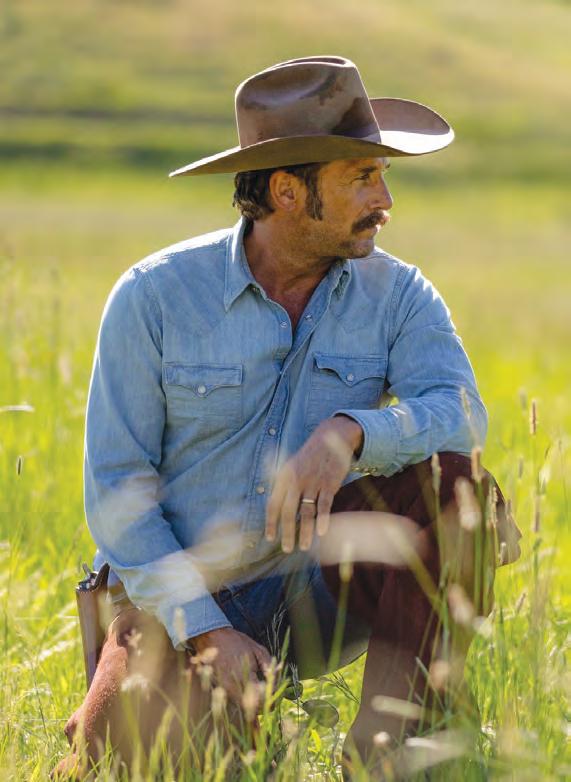

Undeterred by the magnetic pull of Hollywood blockbusters, Lucas chose to delve into producing and starring in projects that resonated more deeply with his personal artistic vision. Ths pivot toward more character-driven narratives didn’t diminish his ability to attract audiences, however. His roles in critically acclaimed films such as Th Lincoln Lawyer (2011) and Ford v Ferrari (2019) reaffirmed his status as a versatile actor capable of drawing viewers into the complexities of his characters. Yet, it’s his portrayal of a younger John Dutton in Yellowstone that has come to encapsulate the essence of Lucas’s career. Ths role, although sporadic, is rich in the rugged charm and depth Lucas has honed over the years. Lucas’s return to Yellowstone in season five, after appearing only in brief flashbacks during the fist two seasons, was met with enthusiasm by fans. When the show fially returns for its last episodes, Lucas hints of his re-appearance.
Reflcting on the connection he has developed with his Yellowstone character, Lucas has expressed his eagerness for more, particularly at the hint of a potential spin-off. “Man, from your lips to God’s ears. I would love it. I mean, obviously I love the world Taylor (Sheridan) has created. I love seeing the generational aspect, the time aspect, obviously the 1800s on. So yeah, I would be there in a second,” he shared with Entertainment Tonight’s Denny Directo.
Transitioning from the raw intensity of Yellowstone to the colorful intrigue of the Apple TV+ series Palm Royale, Lucas once again proves his versatility, joining a cast of celebrated talents like Kristen Wiig, Carol Burnett, Laura Dern, Allison Janney, Ricky Martin, and Leslie Bibb. Set against the glamorous backdrop of 1960s Palm Beach, Palm Royale introduces audiences to the complexities of high society.
Lucas, who filmed Palm Royale and the fist part of Yellowstone’s fial season concurrently, told the Las Vegas Review-Journal, “It’s a wild time in the acting business. I was leaving this opulent world of Palm Beach to slap on a mustache to pretend to be Kevin Costner. It was challenging in the most amazing way.”
“I was leaving this opulent world of Palm Beach to slap on a mustache to pretend to be Kevin Costner.

In discussing his Palm Royale character, Lucas illuminates Douglas’s background with a mix of fondness and complexity. “He’s a blue blood from Palm Beach...He thought it was horrible,” Lucas says about Douglas’s disdain for his world, yet he fids himself drawn back by love and the pursuit of an inheritance. Douglas, described by Lucas as “not the brightest bulb” with a penchant for mischief and poor decision-making, brings a relatable, if not endearing, messiness to the opulent setting of Palm Beach.
Away from the camera, Lucas’s off-creen world is just as colorful and deep as the characters he portrays, but in a different, more grounded way. Lucas found a slice of paradise in Ojai, California, a place where he swaps scripts for the simple joy of living with his son, Noah.
Lucas has always envisioned owning a picturesque, out-of-the way spot. He told the Las Vegas Review-Journal earlier this year, “I had these bizarre dreams about the place where I am right now. I didn’t understand them then, but I’d have one every six months, every couple of years,” said Lucas. According to the article, a doctor’s friend encouraged Lucas to visit Ojai. “I heard a piece of property was for sale the next day. I drove to see it, and a huge owl swept down on me. All of a sudden, I knew this was my place.”
“ There’s no yearning to get the part or make a movie when I’m out there. I just am—and those are truly perfect moments,” he adds. “So many of the coolest things in life are simple.”
“So many of the coolest things in life are simple.


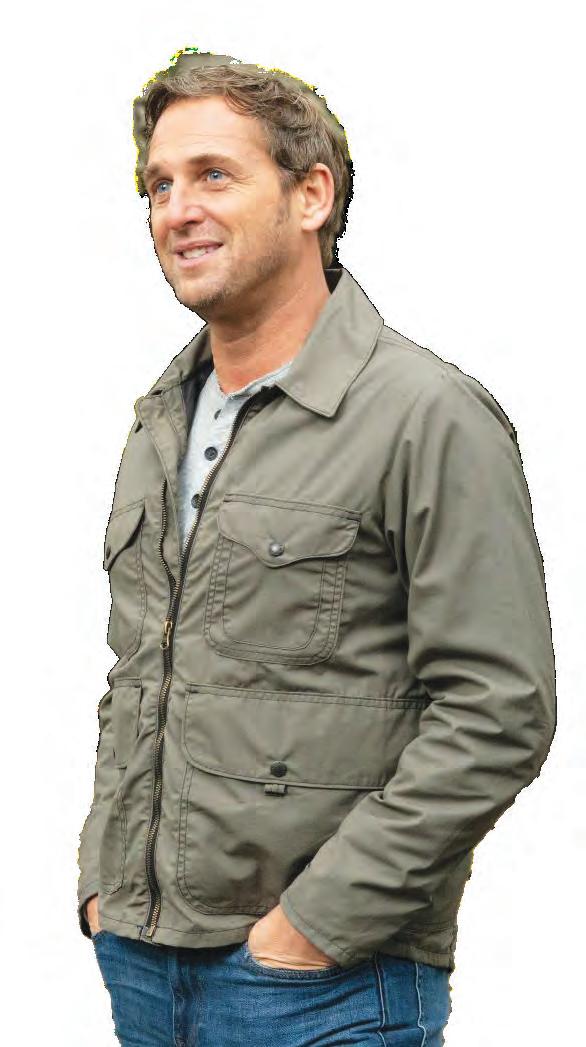




VUDHI SLABISAK, MD OrthopaedicSpineSurgeon


BRUCE MARKMAN, MD OrthopaedicSurgeon&Sports MedicineSpecialist

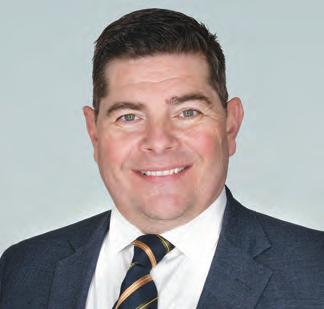
JAMES STANLEY, MD OrthopaedicSpineSurgeon


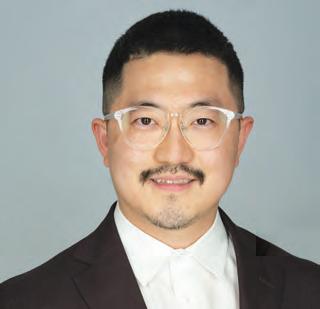
STEVE HONG, MD Interventional Pain ManagementSpecialist






RAHUL BANERJEE, MD OrthopaedicSurgeon
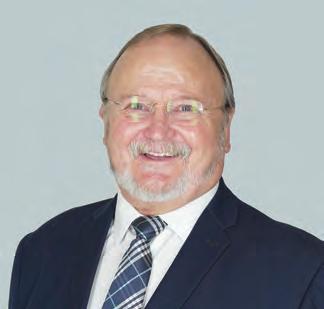
GEOFFREY G. GLIDDEN, MD OrthopaedicSurgeon



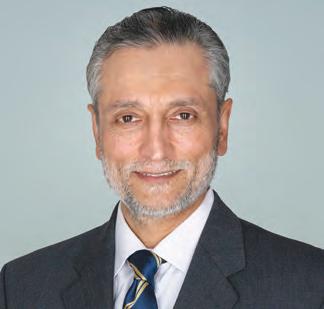
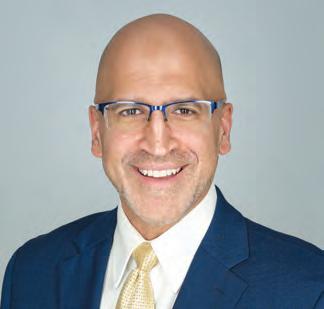




AMIR MALIK, MD Neurosurgeon



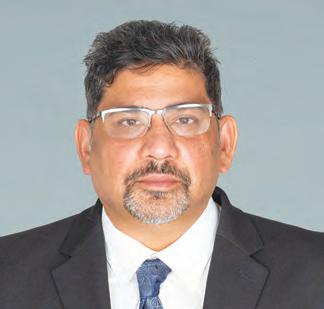

KHAWAJA IKRAM, DO OrthopaedicSurgeon


CHARLES MARDER, DPM Podiatrist,Foot&AnkleSurgeon
AMIR AHMED, MD Gastroenterologist

BRIANA HODGSON, PA-C OrthopaedicSurgery PhysicianAssistant
If you’re suffering from pain or an athletic injury, schedule an appointment with your preferred NTOS location for effective, compassionate treatment.
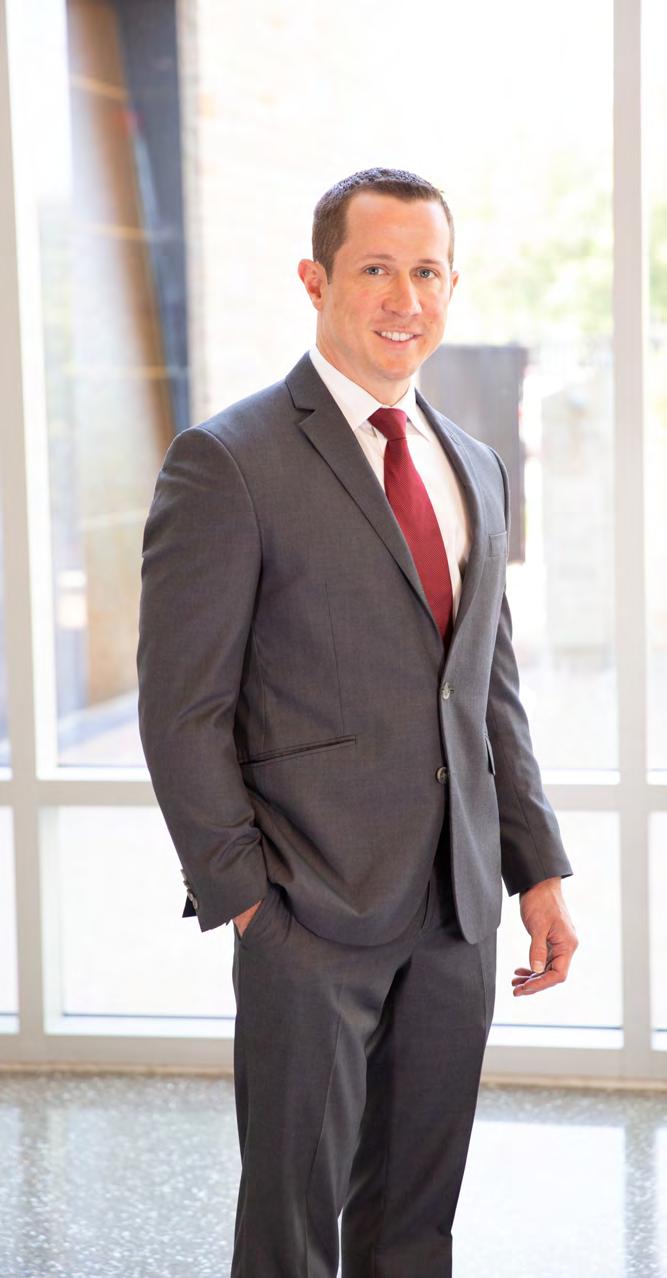
Dr. Chambers is an orthopaedic surgeon at Texas Bone & JointArlington who specializes in joint replacement surgery. He received extensive training in joint replacement surgery during his fellowship at Harvard Medical School / Massachusetts General Hospital, which was voted as the top hospital in the United States. Dr. Chambers has implemented the techniques learned at Harvard Medical School into his own practice and offers minimally invasive total hip / knee replacement, partial knee replacement, revision surgery for malfunctioning, loose, and infected joint replacements, arthroscopic surgery of the hip and knee, and revision of failed and recalled metal-on-metal total hip replacement implants. Dr. Chambers focuses special attention on surgical techniques for rapid recovery after total joint replacement which allow his patients a more predictable and earlier return to home and an active lifestyle.
Dr. Chambers is pleased to offer the MAKOplasty Robotic-Arm Assisted partial/total knee and hip replacement. The MAKOplasty procedure is changing the way joint replacement surgeries are performed by providing each patient with a personalized surgical experience based on their specific diagnosis and unique anatomy using a CT-based 3D modeling. The robotic arm technology allows for extremely precise placement of hip/knee components with potentially less soft tissue injury than traditional joint replacement.
Dr. Chambers is a Texas native and grew up in Houston, Texas. He attended medical school at The University of Texas Medical Branch in Galveston, and completed residency at John Peter Smith Hospital in Fort Worth, Texas. He then completed a fellowship in joint replacement surgery at Harvard Medical School. In his free time, Dr. Chambers enjoys traveling with his wife, Christine, and spending time with friends and family. He is an avid sailor and enjoys participating in sailing races on the local lakes in the Dallas/ Fort Worth area.


Dear Olivia,
The doctor has told us that it is probably time to consider palliative care or hospice. We are not sure we really understand the difference. Can you shed some light on this for us?
~Seeking Help with Advanced Illness
Dear Seeking Help with Advanced Illness, Hospice can be a scary word, and palliative care is a confusing concept for many! At VNA, we try to help families navigate the difficult world of health care options when health is beginning to fail. Simply stated, palliative medicine is aimed at symptom management and quality of life for those with serious or complex medical conditions. Hospice is a type of palliative care but is only one option. In palliative care, a person does not have to be terminal and can continue all treatment options and doctors’ visits as desired. Your doctor may refer you to a palliative clinic or supportive palliative care program if he or she feels that you may benefit from a specialist in
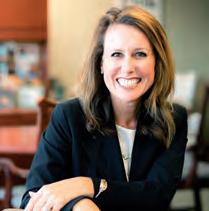

symptom management and coordination of care. Oftentimes, complex conditions require the input of a team of physicians, and to help you navigate this sometimes confusing and stressful journey, palliative care can offer the expertise of a physician certified in hospice and palliative medicine, medical social worker, RN case manager, Nurse Practitioner, and spiritual counselor. Another option at the end of life is hospice care, which is a type of palliative care focused on quality of life and providing comfort. For patients who wish to stay at home (or the place they call home) and no longer want to go to the hospital or emergency room, hospice can provide the same type of interdisciplinary care as palliative care once treatment has ended, or a patient and family no longer wish to pursue curative options. VNA Hospice and Palliative care are here to help you with these difficult decisions, and we are only a phone call away for assistance at any time.
~Olivia



Focuses on quality of life for the patient and family at a time when comfort, compassion and clinical expertise matter most.
To schedule your free in-home informational visit please call (214) 689-0000 or email gethelp@vnatexas.org For volunteer opportunities please call (214) 689-2271 or email volunteer@vnatexas.org
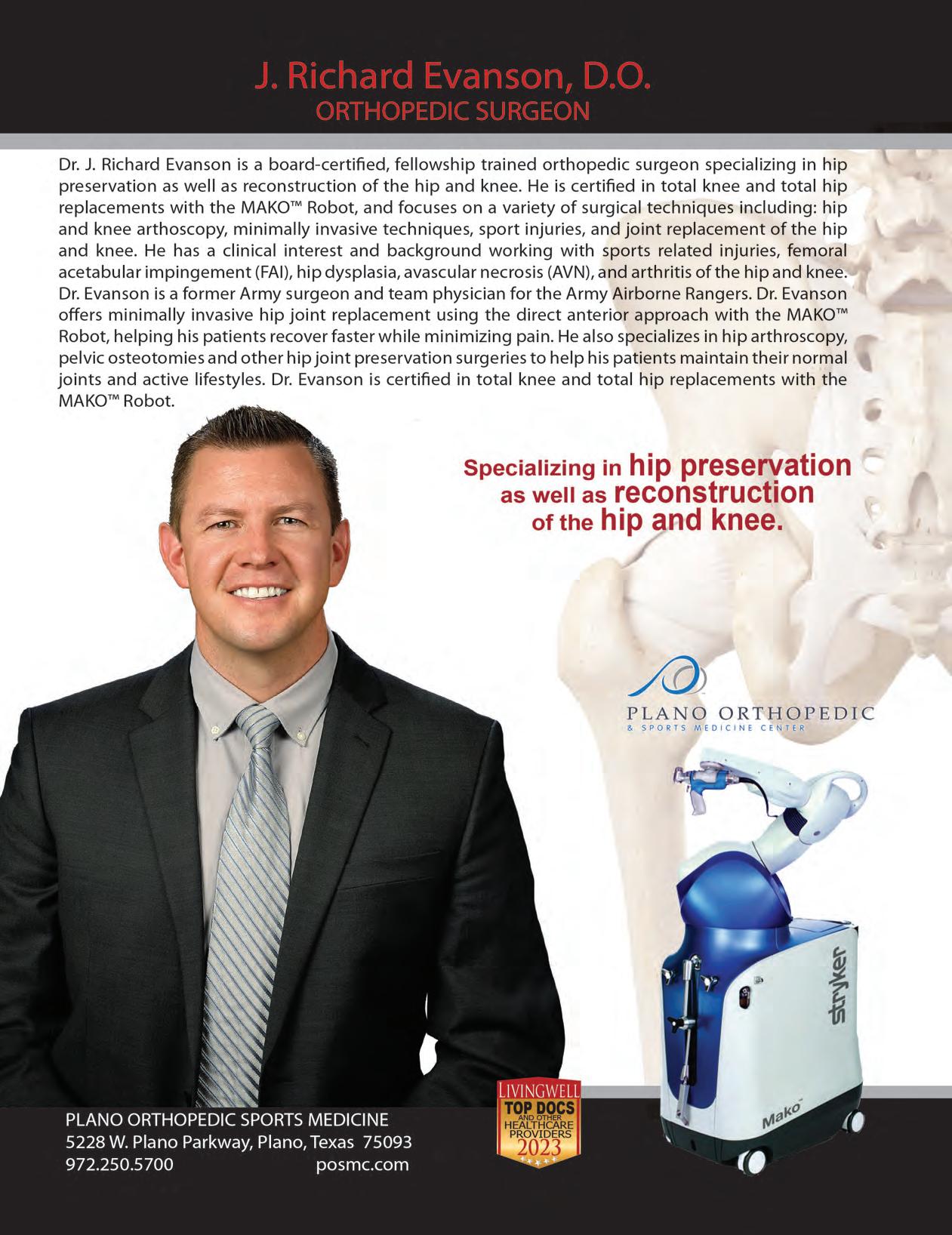
Texas Hip and Knee Center Fellowship Co-Director and Faculty at the Anne Burnett Marion School of Medicine at Texas Christian University
Dr. David Shau is a native Texan, born in Fort Worth, TX. He graduated high school in Flower Mound, TX, and attended the University of Texas at Austin, where he studied biomedical engineering. Dr. Shau then ventured out-of-state to work at leading academic orthopedic surgery centers, including Vanderbilt University, Emory University, and University of California, San Francisco, before being recruited to return home to practice at the premier DFW joint replacement group, the Texas Hip and Knee Center (THK).
Dr. Shau has quickly built his practice through connecting with his community, committing to quality service, and delivering excellent patient care. He utilizes a variety of techniques and approaches for hip and knee care, including direct anterior hip replacements, and offers technology-assisted surgeries, such as Mako Technology for partial and total joint replacements. He also specializes in revision joint surgeries and enjoys complex, challenging cases. As a result of dedicating himself to his craft, his partners at THK promoted him to Fellowship Co-Director early in his practice. Dr. Shau also serves as a Physician Development Coach and is an Assistant Professor at the Burnett School of Medicine at TCU, where he enjoys his roles as a teacher, mentor, and coach.
In his free time, he enjoys food, sports, music, and spending time with his wife and daughter. For more information on Dr. Shau’s care philosophy and the techniques/approaches offered for hip and knee care, please visit DavidShauMD.com.



Dr. Shau has three office locations: 10900 Founders Way, Ste. 201, Fort Worth, TX 76244 6301 Harris Parkway, Ste. 300, Fort Worth, TX 76132

In our fast-paced, technology-driven world, we often fid ourselves disconnected from the natural rhythms of the Earth. However, emerging research suggests that reconnecting with the Earth’s negative electric charge through a practice known as “grounding” or “earthing” may offer numerous health advantages. Grounding involves direct contact with the Earth’s surface, such as walking barefoot on grass, sand, or soil. Another way is to use conductive indoor systems that mimic the effects of direct contact with the Earth. Ths electrical conduction may lead to various healthy physical effects.
Grounding and its health benefits have existed for thousands of years in traditional Chinese medicine, Aboriginal cultures, and Indigenous communities. In the 1800s, well-known German scientists began proposing walking barefoot for health benefits.
At the heart of grounding lies the concept of the Earth’s negative electric charge. The Earth’s surface is endowed with a subtle electrical charge, primarily due to its continual exposure to the sun’s radiation and the Earth’s internal energy. Ths negative charge is abundant in free electrons, which are essential for neutralizing positively charged free radicals in the body. Free radicals, often associated with inflammation and oxidative stress, are implicated in various chronic diseases, including cardiovascular disorders, diabetes, and neurodegenerative conditions.
The consensus is that you may feel some health benefits (such as improved mood and energy) within one session of grounding, but consistent practice for as many days as possible throughout a lifetime is ideal. Some of the many benefits to grounding can be:
1. Reduction of Inflammation: Grounding has been shown to have anti-inflammatory effects, likely due to its ability to neutralize free radicals and reduce oxidative stress. Inflammation is a key factor in the development of numerous diseases, including arthritis, cardiovascular disease, and cancer. By reducing inflammation, grounding may con tribute to overall health and well-being.
2. Improved Sleep: Several studies have suggested that grounding can im prove sleep quality and duration. By restoring the body’s natural circadian rhythms and reducing cortisol levels, grounding may promote deeper, more restorative sleep. Many individuals report experiencing a sense of relaxation and tranquility after spending time grounded, which can contribute to better sleep patterns.
3. Enhanced Immune Function: The immune system plays a crucial role in defending the body against pathogens and maintaining overall health. Ground ing has been shown to support immune function by reducing inflammation and oxi dative stress, thereby enhancing the body’s ability to fiht off inections and diseases.
7. Cardiovascular Health: Grounding may have positive effects on cardiovascular health by reducing blood viscosity, improving blood flw, and regulating blood pressure. These benefits contribute to a lower risk of cardiovascular disease and related complications.
The idea of grounding may sound unusual but if you’re interested, there are multiple simple ways of incorporating grounding into your daily. Here are some suggestions for embracing the benefits of grounding:

4. Stress Reduction: Spending time grounded has been associated with decreased stress levels and increased feelings of calmness and relaxation. Grounding helps to balance the autonomic nervous system, which regulates stress responses, leading to a state of greater equilibrium and well-being.
5. Pain Relief: Grounding has shown promise as a complementary t managing chronic pain conditions, such as fibromyalgia and arthritis. By reducing inflammation and improving circulation, grounding may alleviate pain and discomfort, allowing individuals to experience greater mobility and quality of life. Studies have also shown improved wound healing.
6. Improved Mood and Mental Health: Connecting with the Earth’s natural energy has been linked to improved mood and mental health outcomes. Grounding promotes the release of endorphins and serotonin, neurotransmitters associated with feelings of happiness and well-being. Additionally, spending time outdoors in nature has been shown to reduce symptoms of depression, anxiety, and stress. Many people report on the spiritual aspect of grounding, including feelings of peace, meditation, and contentment after a grounding session.
• Routinely walk barefoot outdoors on grass, sand, or soil. Simply take off your shoes and connect directly with the Earth’s surface to experience its rejuvenating effects for a few minutes if you don’t have time for a walk at that moment.
• Engage in gardening activities, such as planting, weeding, or harvesting, to connect with the Earth and reap the therapeutic benefits of working with soil and plants. Press your hands into the dirt to feel the earth.
• Spend time outdoors engaging in activities like picnicking, hiking, or practicing yoga in natural settings. Embrace the beauty of nature and allow yourself to unwind and recharge.
• Spend time lying flat on the dirt, grass, sand, or gravel with your back, legs, or arms bare.
• To help your natural circadian rhythm, try getting into the sunlight when you fist wake up and dimming the lights at least 2 hours before bedtime.
• Submerge yourself in a natural body of water, such as swimming in a pond, lake, or ocean. Consider this a great excuse to book that beach vacation!
Articles on studies of grounding are published at the National Library of Medicine. You can read those at pubmed.ncbi.nlm.nih.gov. There is also a documentary movie called The Earthing Movie which you can learn more about at resilience.org. At the time this article was written you could stream and view it on Amazon Prime.
Some of the quickest results people share are lower stress increased energy levels, and improved mood and sleep quality. It’s a free suggested holistic method of health and wellness, so try it. See whether it works for you. If it does, great. Just remember to wash your feet if it doesn’t and put your shoes back on! Do what works best for you.


Over the course of a lifetime, one in three women will face a cancer diagnosis. “For men, the odds stand at one in two. The good news is that between 30 and 50% of cancers may be preventable,” according to the World Health Organization. By taking small but meaningful actions toward a healthier lifestyle, you can create a positive habit that could decrease your cancer risk. Texas Oncology suggests five ways to get started.
Screening exams are the most effective way to detect cancer in its earliest stages – often before it has spread and when treatment is the most effective. Call your physician to schedule your annual screenings and reach out to friends and loved ones to ensure they do the same.
Whether you prefer biking, gardening, walking, or yoga, it’s important to get active. The U.S. Department of Health and Human Services recommends healthy adults participate in a minimum of 150 minutes of moderate exercise or 75 minutes of vigorous exercise each week. Incorporating regular physical activity into your daily routine can reduce your risk for several major cancers, as well as improve quality of life for those already fihting cancer.
Managing your weight and eating a well-balanced diet full of nutrient-rich foods is critical to both preventing and fihting cancer. To bolster your body’s defenses against cancer and other illnesses, limit your intake of sugars, saturated fats, trans fats, and alcohol. Instead, opt for healthy foods like nutrient-packed produce, dark, leafy greens, and a variety of seasonal fruits and cruciferous vegetables.
Skin cancer is the most common form of cancer, but many cases are preventable. The sun constantly produces ultraviolet (UV) rays that can penetrate clouds and affect your skin, even on overcast days or during cold weather. Limit exposure to UV rays by avoiding indoor tanning, applying sunscreen year-round, and wearing protective clothing that covers your skin.
Smoking-related deaths represent 80% of lung cancer mortalities, and half of lifetime smokers will die from some tobacco-related disease, according to the American Cancer Society. Research shows that smoking cessation is paramount to lung health, and smokers who quit are more likely to live healthier and longer lives, while greatly decreasing their lung cancer risk. If you smoke and don’t know how to quit, call the Quitline at (877) 937-7848 for help and support.
Adopting a healthy lifestyle doesn’t mean changing everything overnight. By starting with small, intentional changes in your daily routine, you can create lasting healthy habits. For more information about the steps you can take to reduce your cancer risk, visit www.TexasOncology.com.

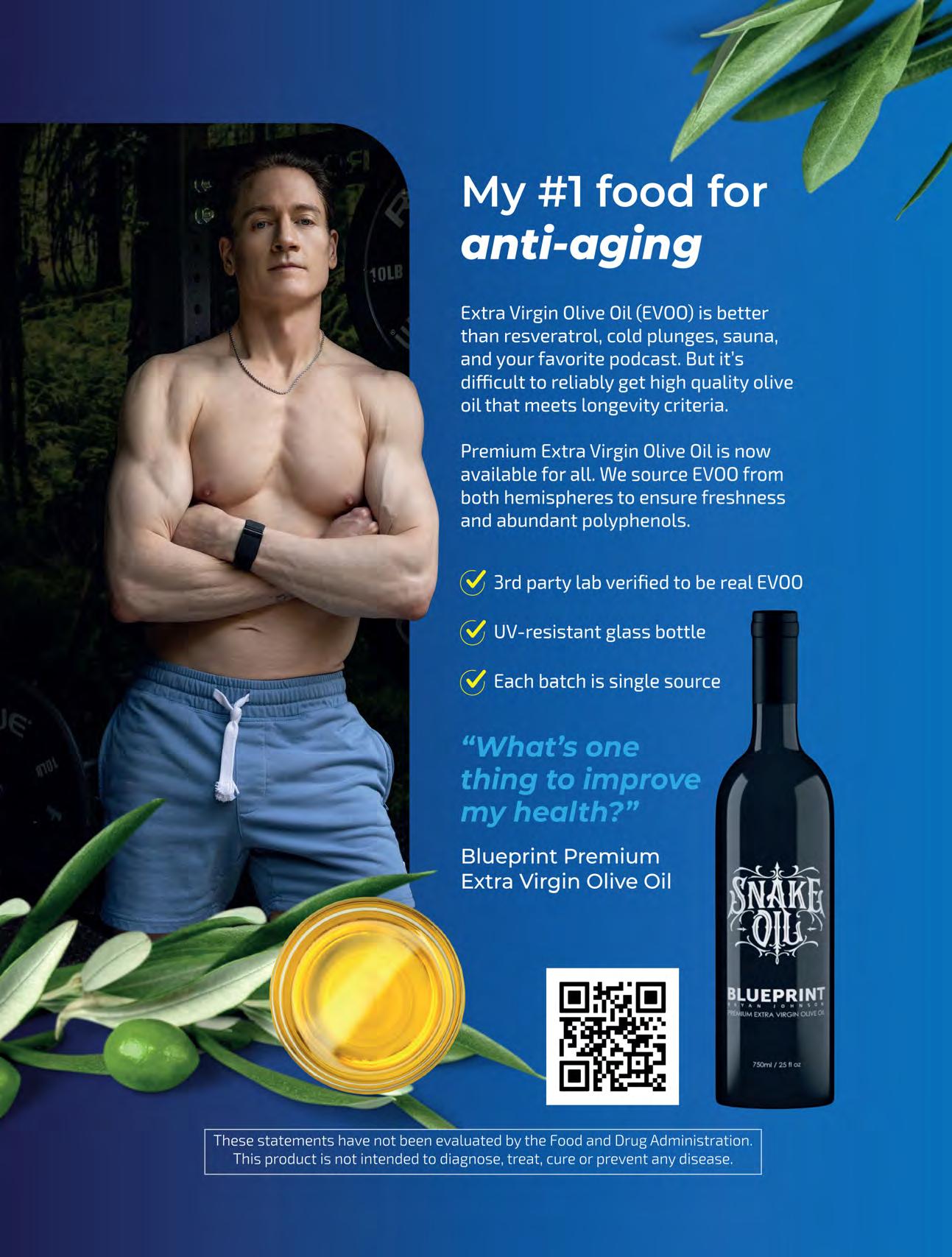

NATIONALLY RECOGNIZED DWI AND CRIMINAL DEFENSE LAW FIRM
Attorney Deandra M. Grant leads Hamilton Grant’s North, East and Central Texas offices. She is an international speaker on DWI law, science and trial skills. As the author of the annually updated Texas DWI Manual, she is viewed by her peers as being a leader in her field. Deandra understands the science behind alcohol absorption and elimination rates and can use this knowledge to competently defend you.
Deandra formerly was an assistant district attorney. Her tenure as a prosecutor focused on DWI prosecutions which has given her firsthand knowledge on how to counter the prosecutor’s evidence and strategy. Deandra has spent hundreds of hours in training courses and programs related to DWI defense and has completed the certification course to administer standard field sobriety testing (SFST), the same training course taught to police officers nationwide on how to identify drunk drivers during traffic stops. As a certified SFST Instructor, Deandra has taught the course to other attorneys. She’s also completed the coursework on DWI forensic blood and urine testing.
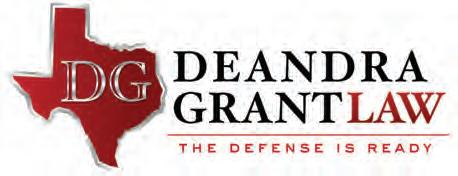

Co-Author of the Texas DWI Manual
“I have a masters degree in pharmaceutical science and a graduate certificate in forensic toxicology. I am able to take apart evidence in ways a lot of other attorneys are not able to do. The most important part of my job is being the barrier between the government and my client. Standing between them. Making sure their rights are protected.”
–DEANDRA GRANT
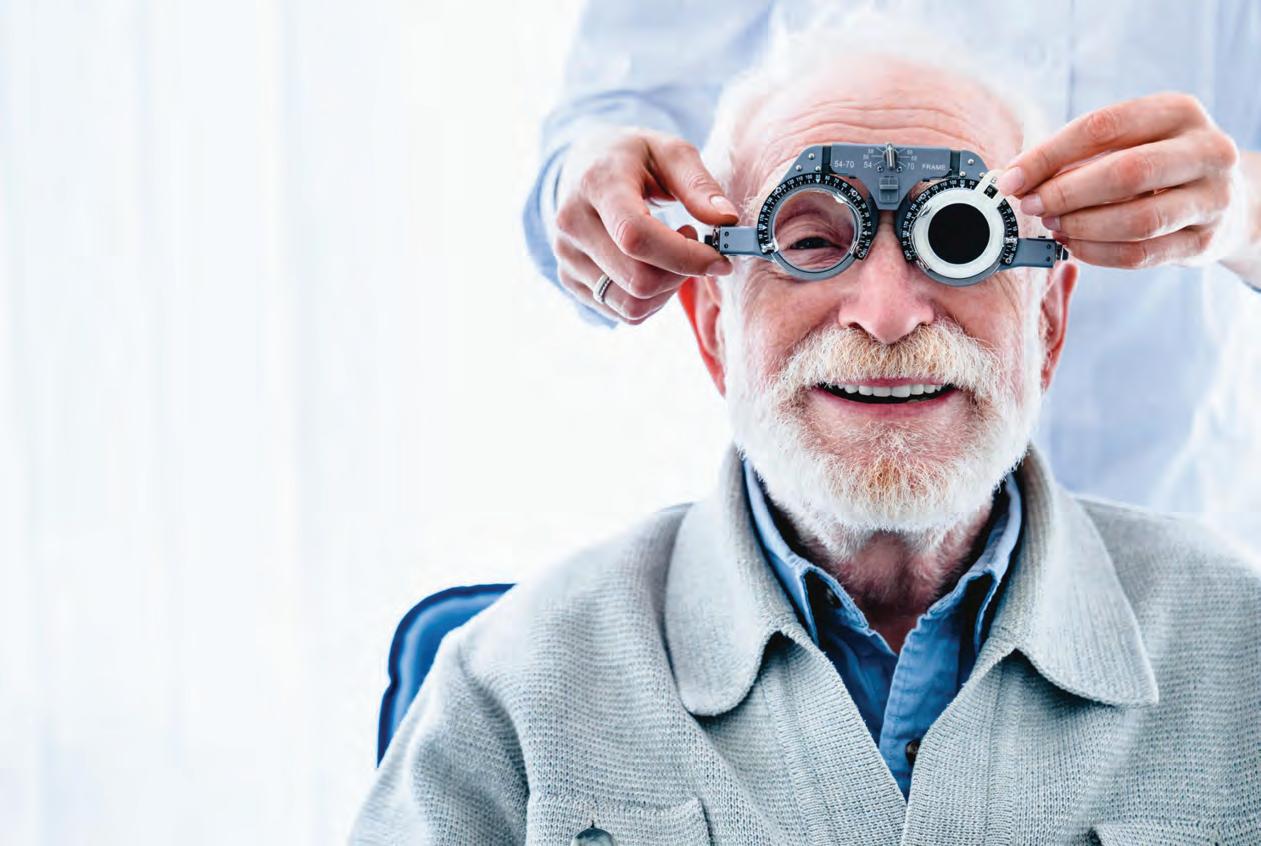
If cataract surgery has been recommended for your eyes, you are not alone. Truth is, we will all develop cataracts, reducing our quality of vision, as we age. Gratefully, cataract surgery procedures have become more advanced and is safe, painless and effective.
If you are thinking about having cataract surgery, you most likely have a lot of questions regarding when you should have it done, what you can expect, and how to prepare for surgery. Read on to see some helpful tips from Dr. Whitman at Key-Whitman.
The complaint we hear most from cataract patients is difficulties with their night vision. They begin to experience a lot of glare, halos and starburst symptoms, especially when driving. We also hear complaints of a haze or fog obstructing their vision and they’ll notice their vision gets blurrier over time.
Before your procedure, our patients undergo a preoperative exam to gather measurements to determine the level of correction needed and review the types of intraocular lens options available. We will also schedule a visit to listen to your heart and lungs as well as review prior anesthesia and surgeries, medical history and medications to ensure they’re physically healthy enough to have cataract surgery.
Key-Whitman also has counselors who will walk our patients through the process, review insurance coverage and make sure the
lens option the patient selects best meets their goals. If there is an eye drop protocol associate with their surgery, the counselor will also go through the drop sequence involved—antibiotics and non-steroidal anti-inflammatories—well in advance of the procedure.
Be sure to have a friend or family member to accompany you to surgery, as you won’t be allowed to drive yourself home due to the twilight sedation.
How Do I Know It’s Time To Have Cataract Surgery?
When your cataracts have worsened to the point where they prevent you from performing day-to-day tasks and interfere with your quality of life, it is time to consider cataract surgery.
Cataracts worsen gradually, and we start to make a lot of accommodations for our vision as we get older. Essentially, we assume how well we see is normal. But if it gets to the point where you’re afraid to drive at night, can’t see well enough to safely take your medication or do household chores, and feel a loss of independence due to failing vision, cataract surgery can allow you to enjoy life again.
In the past, cataract surgery was quite invasive, there were fewer lens options, and healing took much longer. Ths isn’t the case today. The biggest misconceptions people have is that the procedure is painful and complicated. That couldn’t be farther from the truth today.

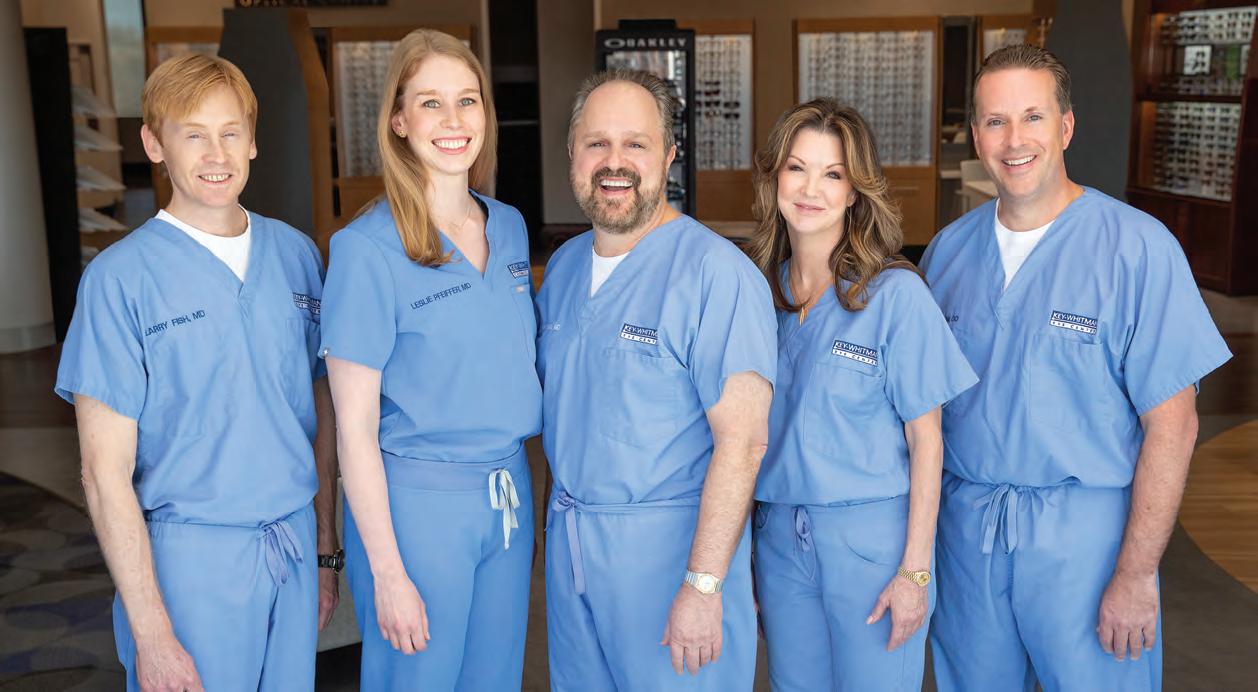
Following your surgery, your surgeon will review the procedure with you and answer any questions you may have at that time. Typically, patients leave with a protective eye patch, which will be removed at their follow-up visit the next day. Subsequent follow-up examinations will be scheduled approximately every two weeks until the eye is healed.
Healing post-surgery is also easier for most cataract patients today. “Key-Whitman uses the most advanced technology available, so healing occurs more quickly and with fewer complications. Even better, once the eyes have healed and adjusted, most patients are surprised by the improvement in their vision. They can see clearly again and notice how colors are much more vibrant than before with cataracts. Depending on the type of intraocular lenses patients choose, many become less dependent on glasses,” Dr. Whitman says.
You should also be aware that the surgeon won’t operate on both eyes during the same visit. Surgeries are typically scheduled one to two weeks apart. Ths allows plenty of time for the fist eye to heal and the patient to realize the full extent of correction in that eye.




Radiant Imaging is a locally owned and operated diagnostic imaging center that offers their patients full-body scans with optimum patient comfort. Our team aims to make the diagnostic process as comfortable and safe as possible because we recognize the tension and anxiety that are frequently associated with it.
Radiant Imaging’s cutting-edge technology provides our patients the most reliable results possible. Our imaging center offers:
• Arthrograms
• Magnetic Resonance Imaging (MRI)
• 3 Tesla Magnetic Resonance Imaging (MRI 3T)
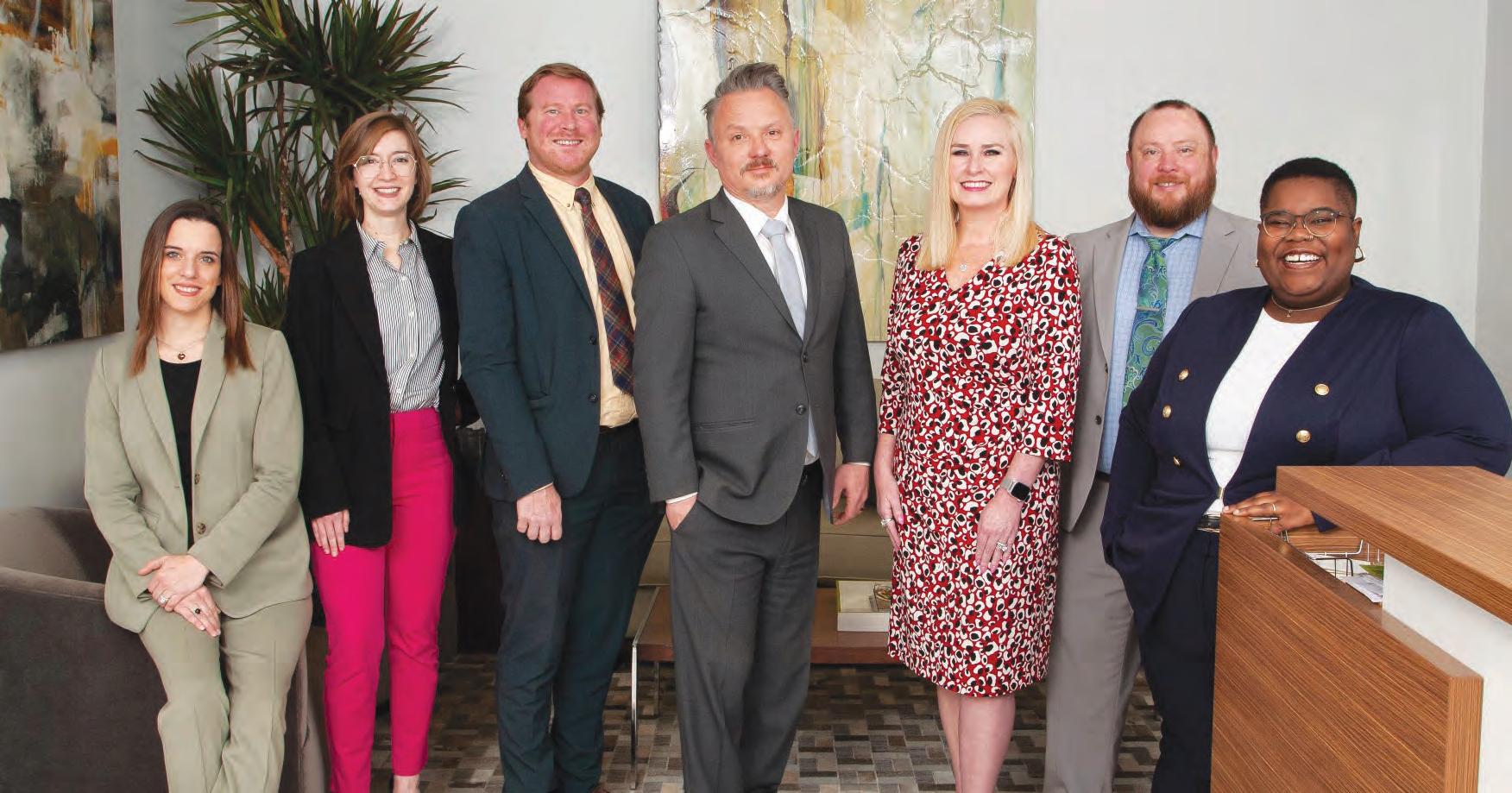
Have you been arrested? Whether you have been charged with DWI in Texas or another criminal offense, we advise you to secure the immediate representation of our experienced DWI lawyers. Your charges can have life-altering consequences. It is of the utmost importance that following an arrest, you hire our Dallas criminal defense lawyer. We will stop at nothing in order to protect your rights, freedom, and future. At Hamilton Grant PC, you will receive the individualized support and tenacious advocacy that you require in order to combat your criminal charges.
Because we care deeply about helping as many people as we can, our Texas DWI & criminal attorneys also represent clients in Collin County and throughout northern Texas.

Hamilton Grant’s North, East and South Texas offices are led by Attorney Deandra Grant*, JD, GC, MS, one of the most awarded and respected DWI authorities in the country. She is co-author of The Texas DWI Manual, certified in the science and testing of DWI enforcement, and respected by her peers as being a leader in her field.

In 2023 alone, there were more than one million reports of identity theftreceived through the FTC’s IdentityTheft.ov website. “Digital tools are making it easier than ever to target hard-working Americans, and we see the effects of that in the data we’re releasing today,” said the Director of the FTC’s Bureau of Consumer Protection, Samuel Levine. The act of someone using your fiancial or personal information without your consent is known as identity theft. The FTC is working hard to take action to protect consumers but the most impactful place to start is by actively securing your personal information. Your name, address, credit card, bank, Social Security, and health insurance account details could be taken by scammers and they could use them to:
• Buy things with your credit cards
• Get new credit cards in your name
• Open a phone, electricity, or gas account in your name
• Steal your tax refund
• Use your health insurance to get medical care
• Pretend to be you if they are arrested
By taking precautions to safeguard your personal data, you can prevent identity theft. ere are some tips to keep identity thieves at bay.
Protect documents that have personal information. Store all your fiancial data, Social Security and Medicare cards, all other documents containing personal information in a safe place. When you decide to get rid of those documents, shred them before you throw them away. If you don’t have a shredder, look for a local shred day, or use a marker to block out account numbers. Amazon’s own top selling home-officshredder with great reviews is just $38. You can also fid a black out security ink roller there for under $15.
Ask questions before disclosing your Social Security number. Some organizations need your Social Security number to identify you. These entities include the IRS, your bank, and your employer. Businesses such as these that require your Social Security number will not contact you by phone, email, or text you to ask for it.
Other organizations that might ask you for your Social Security number might not really need it. Those organizations include a medical pro-
vider, a company, or your child’s school. Prior to providing them with your Social Security number, ask them these questions:
• Why do you need it?
• How will you protect it?
• Can you use a different number?
• Can you use just the last four digits of my Social Security number?
In today’s digital age, passwords are the keys to our online lives. From email accounts and social media platforms to online banking and shopping accounts, we rely on passwords to protect our sensitive information from unauthorized access. If you’re logging in to an online account you already know to use a strong password. But what makes a strong password? Microsoft.cm has some great suggestions:
• At least 12 characters long but 14 or more is better.
• A combination of uppercase letters, lowercase letters, numbers, and symbols.
• Do not use a word that can be found in a dictionary or the name of a person, character, product, or organization.
• Make it signifiantly different from your previous used passwords.
A strong password doesn’t provide any protection if prying eyes can get ahold of it. Here are some best practices for storing passwords and keeping those online accounts safe.
Using a reliable password manager is one of the best ways to store passwords safely. All of your passwords are kept in one location in password managers, which are encrypted digital vaults that can only be accessed with a master password or biometric authentication. They generate strong, unique passwords for each of your accounts and automatically fill them in when you log in, eliminating the need to remember multiple passwords. Popular password managers include LastPass, 1Password, and Dashlane.
When offered by an online site, utilize multi-factor authentication which offers extra security by requiring two or more credentials to log in to your account. The additional credentials you need to log in to your account fall into two categories: something you have—like a passcode you get via text or an authentication app, or something you are—like a scan of your figerprint, your retina, or your face. Multi-factor authentication makes it harder for scammers to log in to your accounts if they do get access to your username and password.
Passwords shouldn’t be kept on sticky notes that are affixed to your computer monitor, in spreadsheets, or unencrypted documents. Rather, keep them safely offle in a physical place like a safe or a locked drawer. Use a notepad or password journal made just for this purpose if you must write down your passwords.
Beware of phishing emails, text messages, or phone calls that attempt to trick you into disclosing your passwords or other sensitive information. It is advisable to confim the legitimacy of messages received from unknown senders and refrain from opening attachments or clicking on dubious links. Do not give your personal information to someone who calls, emails, or texts you. It could be a scammer trying to steal your information and they can be convincing!
Periodically review and update your passwords to ensure they remain strong and secure. For your most important accounts, think about updating the passwords every few months or following a security breach or possible compromise. Many password managers offer password health reports that identify weak or reused passwords that need to be updated.
Keep yourself updated about the newest risks to cybersecurity and the best ways to safeguard your online accounts. Learn how to properly protect your digital identity by attending webinars or workshops, subscribing to security newsletters, and keeping up with credible cybersecurity websites.
Many companies sell identity theftprotection services that may include credit monitoring, identity monitoring, identity recovery services, and identity theftinsurance. These services might be offered by your bank or credit union, credit card provider, employer’s benefits program, or your insurance company.
Credit monitoring services scan activity that shows up on your credit reports and alert you of any new activity. They might monitor activity at one, two, or all three of the major credit bureaus—Equifax, Experian, and TransUnion.
Companies that sell credit and identity monitoring services also may offer identity recovery services to help you fixany damage caused by identity theft. These services may be included or cost extra. Identity theftinsurance generally won’t reimburse you for money lost resulting from the theft.Most policies won’t pay if your loss is covered by your homeowner’s or renter’s insurance. If you’re considering getting identity theftinsurance, ask about the deductible and fid out what’s covered and what isn’t.
By following these best practices and staying vigilant, you can enhance the security of your digital presence and minimize the risk of falling victim to identity theft.If you have been a victim of identity theft,you may fid helpful information on recovering from identity theft t www.livingwellmag.com/identity-theft.


» Staffed by 2 Licensed, Doctors of Audiology
» Hearing Aid Fittings, Maintenance and Repairs
» Invisible Fittings/Open Fittings
» Evaluation Period On All Hearing Aids
» Hearing Evaluations For All Ages
» Wireless/Connectivity Hearing Solutions
» Battery Purchase Programs
» Custom Ear Protection
» Assistive Devices



Hearing is one of the body’s most remarkable senses. It integrates with our brain to help us connect with the world around us. Made up of a complex system of delicate and synchronous parts, it’s easy to take this vital sense for granted. If any of these components aren’t working properly, the result could be hearing loss. For 48 million Americans—or nearly one in five, ages 12 and older—this is precisely the case.
If you think you or someone you know has hearing loss, you’re probably wondering what the next step should be. That’s easy; see a hearing professional. It’s important to see someone who specializes in hearing issues such as a Doctor of Audiology. Schedule a comprehensive evaluation to begin treatment and rehabilitation as soon as possible.
While hearing loss typically can’t be reversed, most cases can be managed with the help of an Audiologist and hearing aids.
Just as every person is unique, every hearing loss and need is unique too. To ensure you get a solution that’s custom fit to your precise needs and lifestyle, it’s always recommended that you consult with an audiologist. These trained experts have the experience, education, and technology needed to diagnose and measure your degree of hearing loss, then recommend and administer a solution personalized for you, including ongoing support and care.
Today the best solution for sensorineural hearing loss is hearing aids. Like all high-tech devices, hearing aids have improved signifiantly over the past several years in terms of performance and appearance. From “invisible” solutions that fit deep inside your ear and are virtually undetectable but still deliver exceptional sound quality, to wireless options that stream audio from your phone and TV, today’s hearing aids sound better, fit more comfortably, and perform more reliably than ever before.
A microphone picks up sound and converts it into an electrical/digital signal. An amplifierthen increases the strength of the signal, which in our more sophisticated devices is manipulated by advanced signal processing. Ths allows the signal to be “shaped” to someone’s hearing loss. The receiver or speaker converts it back into sound and sends it into the ear canal, to eventually reach the inner ear. That signal goes up the auditory pathway to the brain which “hears” and understands the sound as speech.
There is a difference between basic amplifiation products and hearing aids. Hearing aids and personal sound amplifierproducts (PSAPs) both improve the ability to hear sound. PSAPs are typically stripped of sound enhancement features. In many ways, these devices are a throwback to the old analog hearing aids that basically just made all sounds louder. However, prescriptive hearing aids are designed to improve your hearing in more difficult listening situations with advanced technology features like feedback elimination, noise reduction technology and often better ability to hear on the phone.
Nearly 95% of people with sensorineural hearing loss can be helped with hearing aids. But wearing two hearing aids delivers these additional benefits:
• Better understanding of speech
• Better understanding of background noise
• Better and smoother sound quality
• Better sound identifiation and localization
• Better tinnitus masking
Research by the National Council on Aging (NCOA) concluded that hearing loss treatment is shown to improve: physical health, communication in relationships, warmth in family relationships, ease in communication, emotional stability, sense of control over life events, and earning power.
Today’s best hearing aids are precision instruments, utilizing advanced technology that can and should be customized to fit your specifichearing loss and unique lifestyle needs. Determining which hearing aids are right for you depends on a variety of important and unique factors including: the nature and severity of your hearing loss, your eyesight and dexterity, the size and shape of your outer ear, the types of activities you enjoy (listening needs assessment) and cosmetic concerns. That’s why getting fit with the advice and consultation of an experienced Audiologist can’t be overemphasized.
The Better Hearing Institute reiterates this in their report: “ The hearing aid fitting process requires complete in-person hearing assessment in a sound booth; the training and skills of a credentialed hearing professional in order to prescriptively fit the hearing aids using sophisticated computer programs; and appropriate in-person follow-up and counseling. Ths is not possible when consumers purchase one-size-fits-all hearing aids over the internet or elsewhere.”



